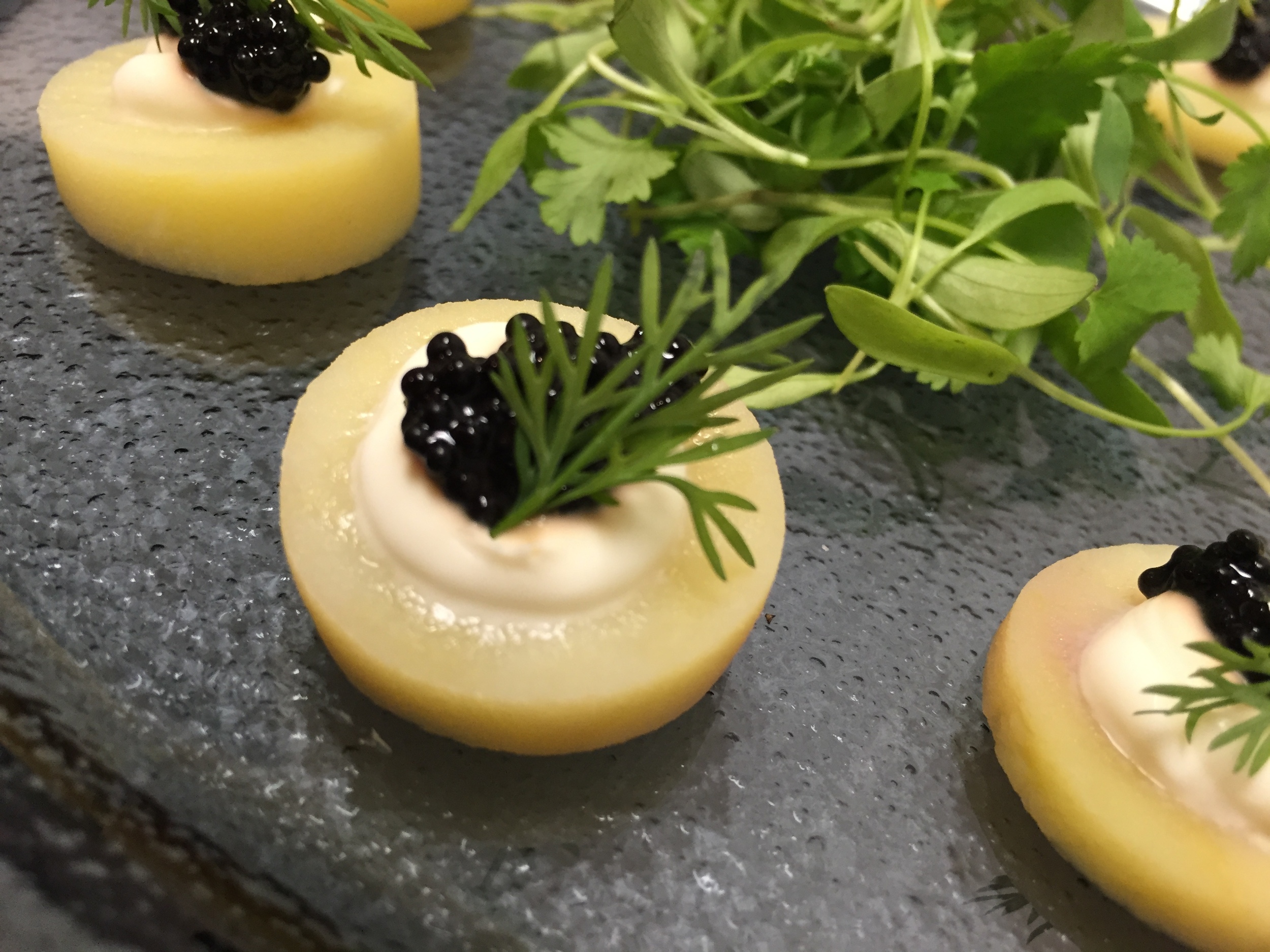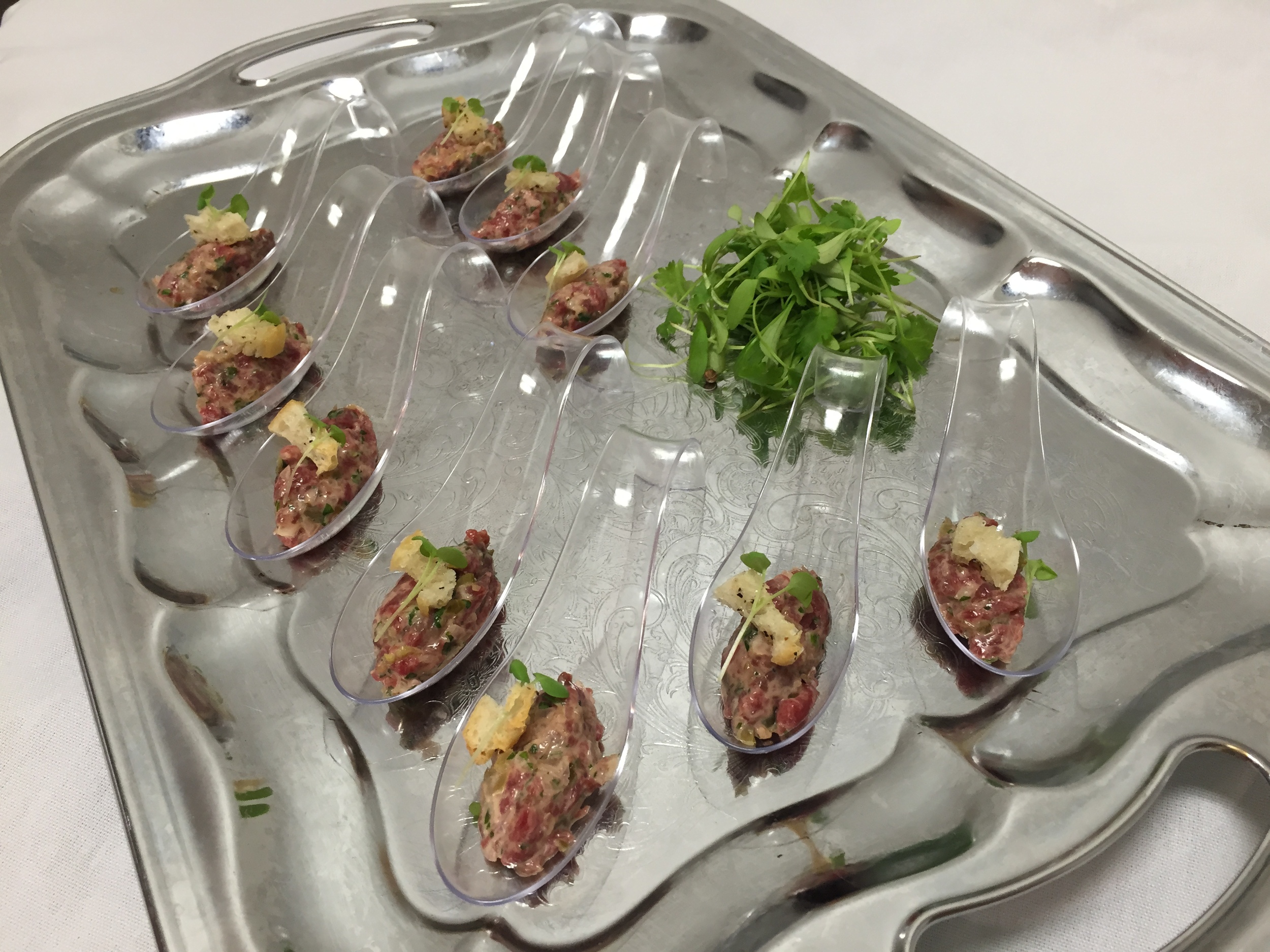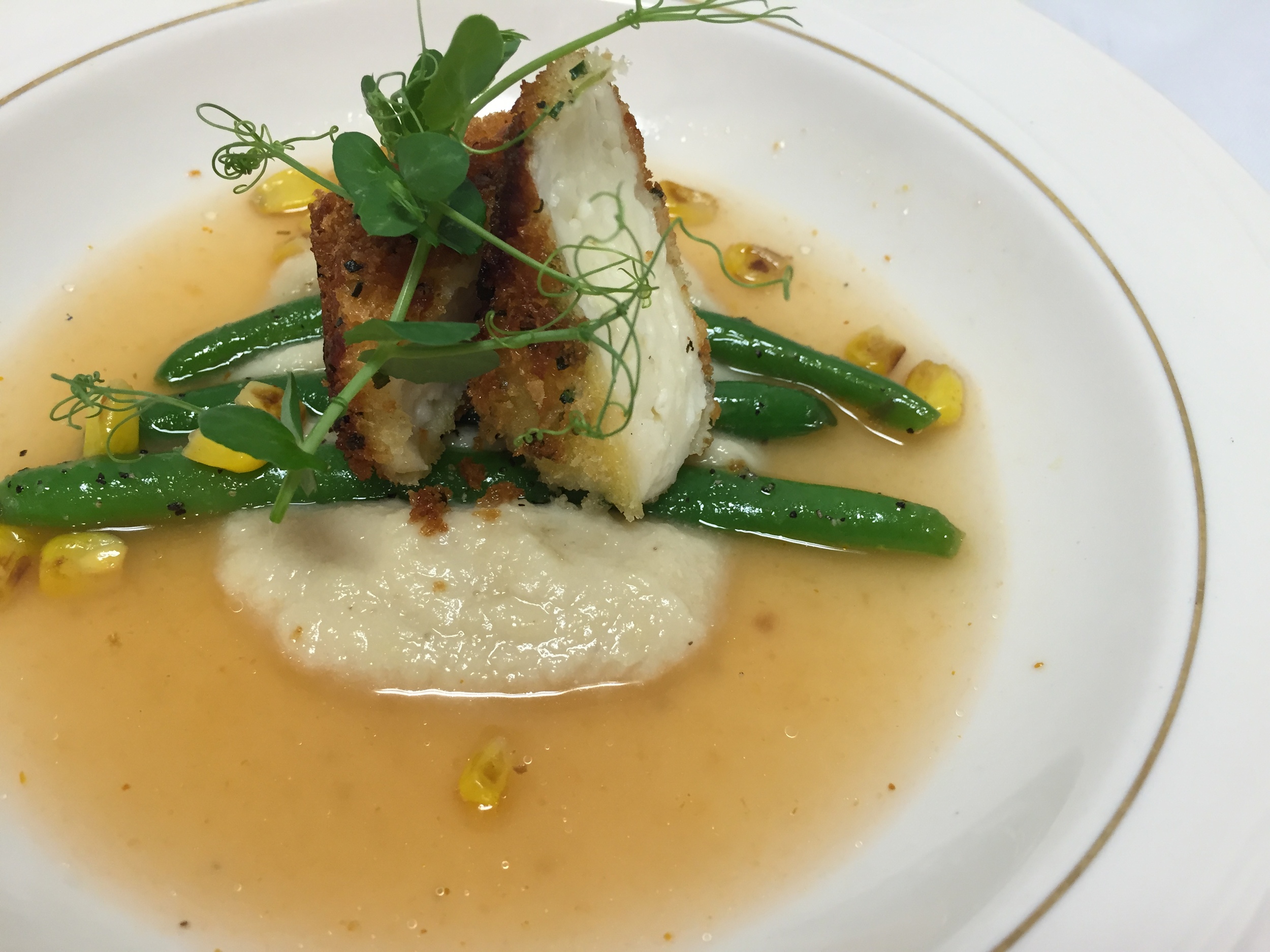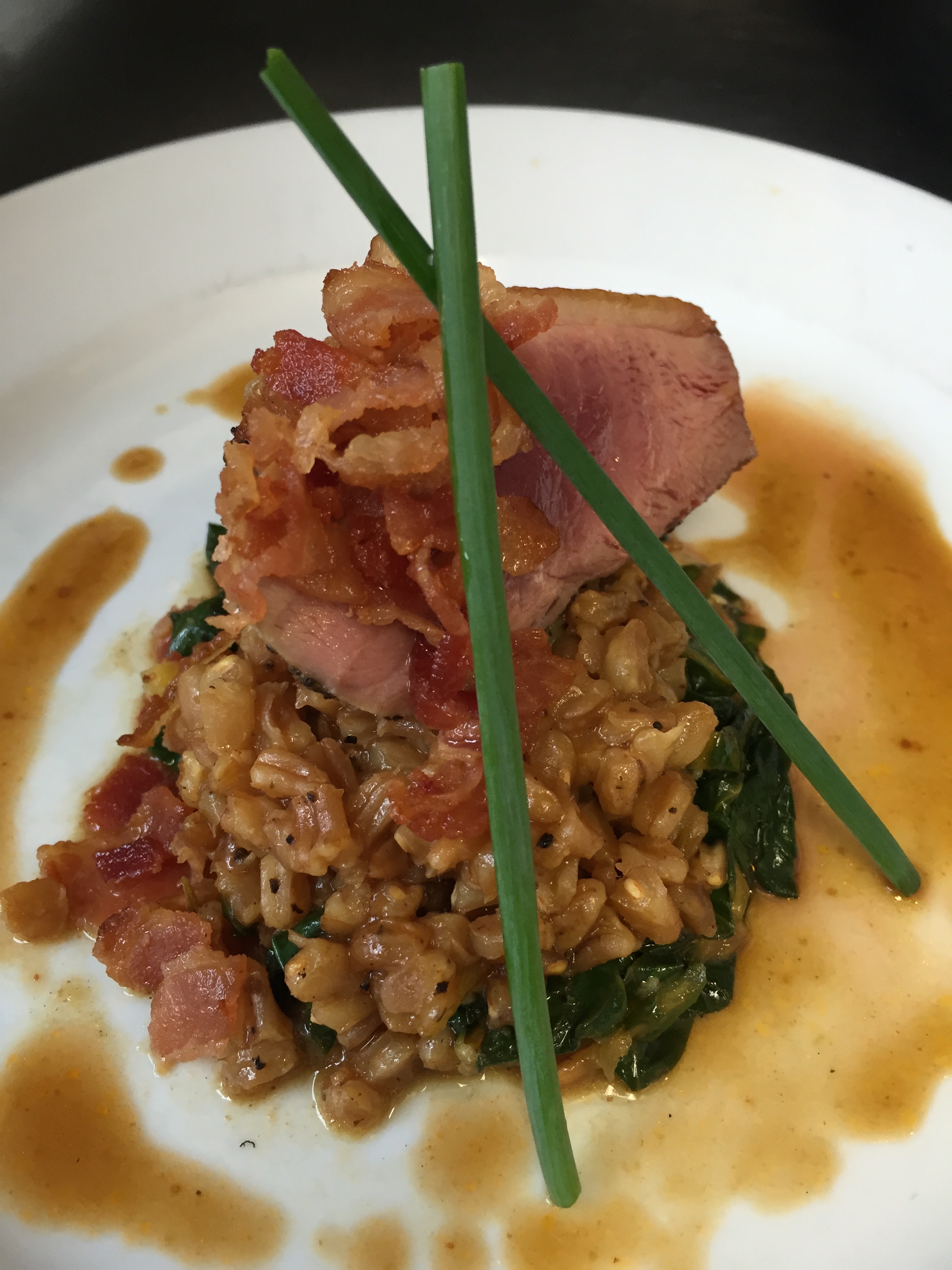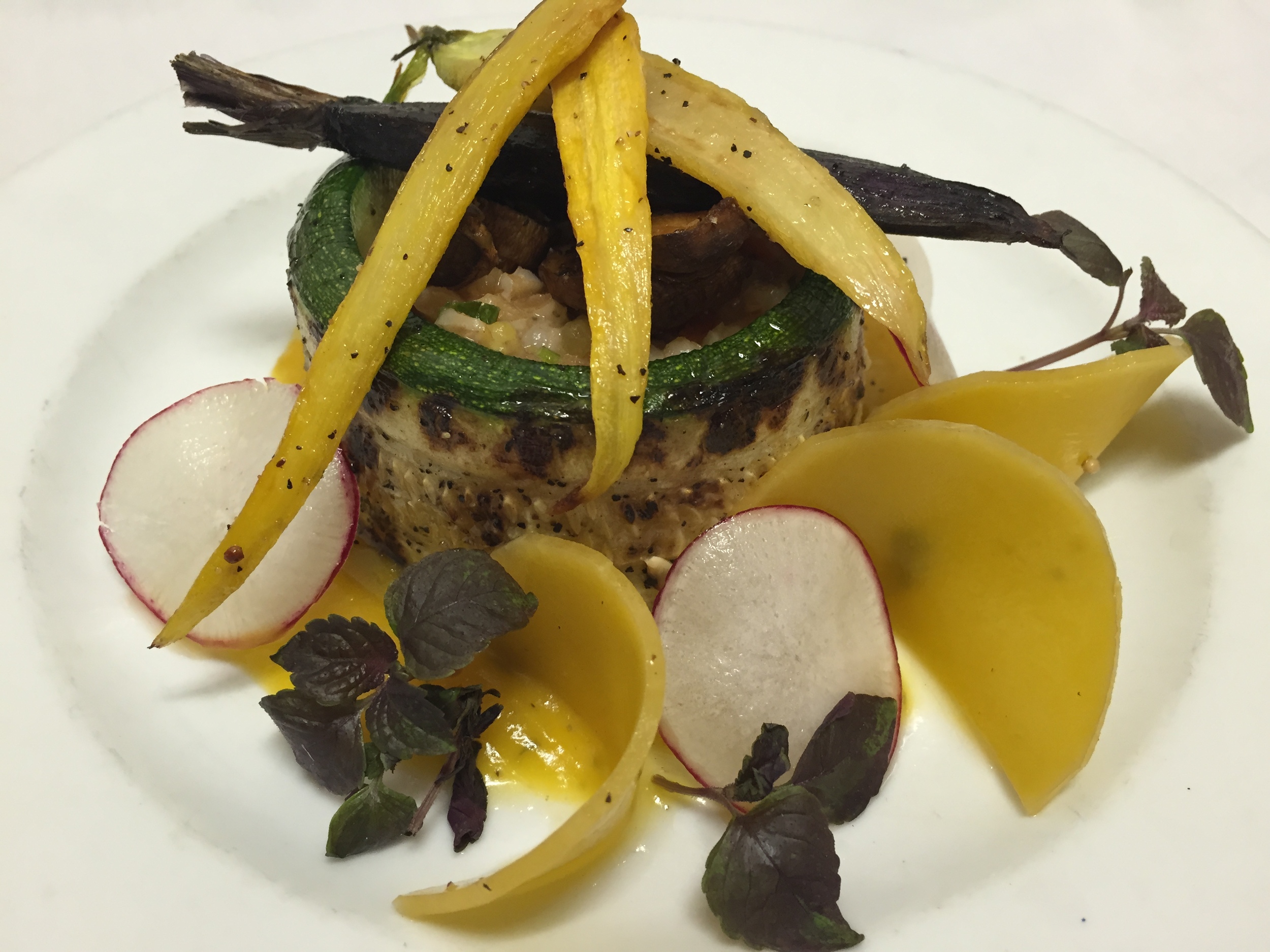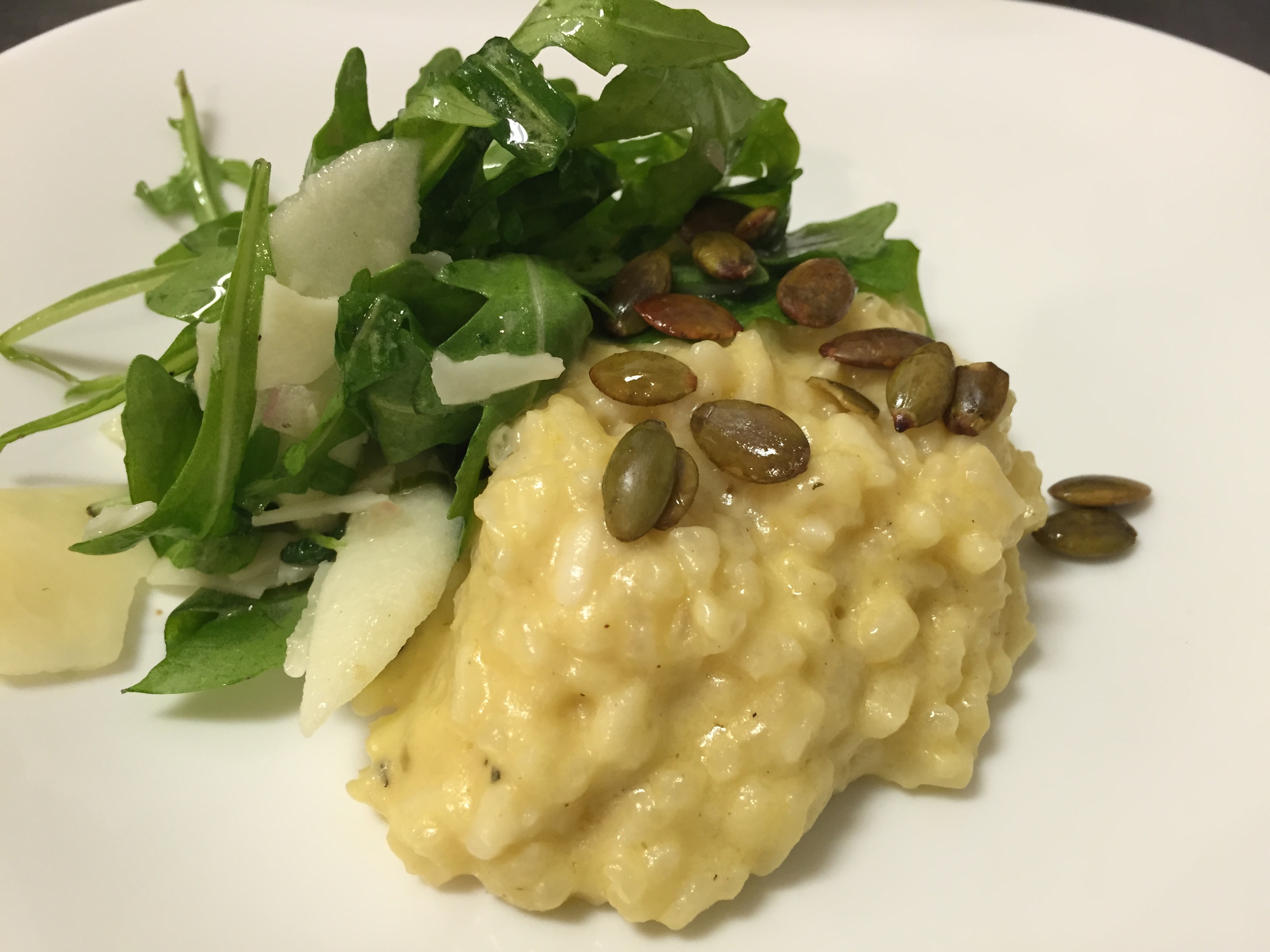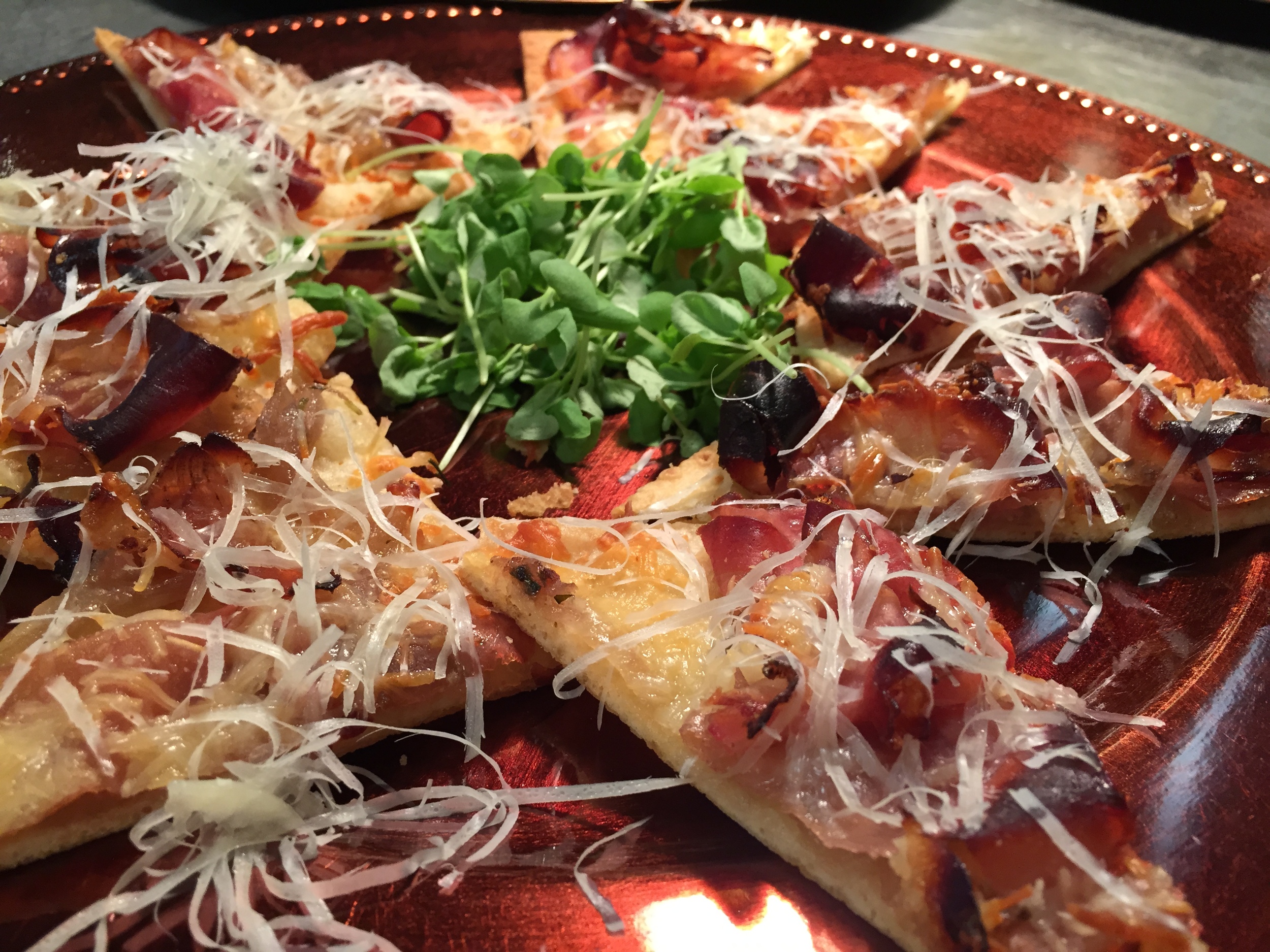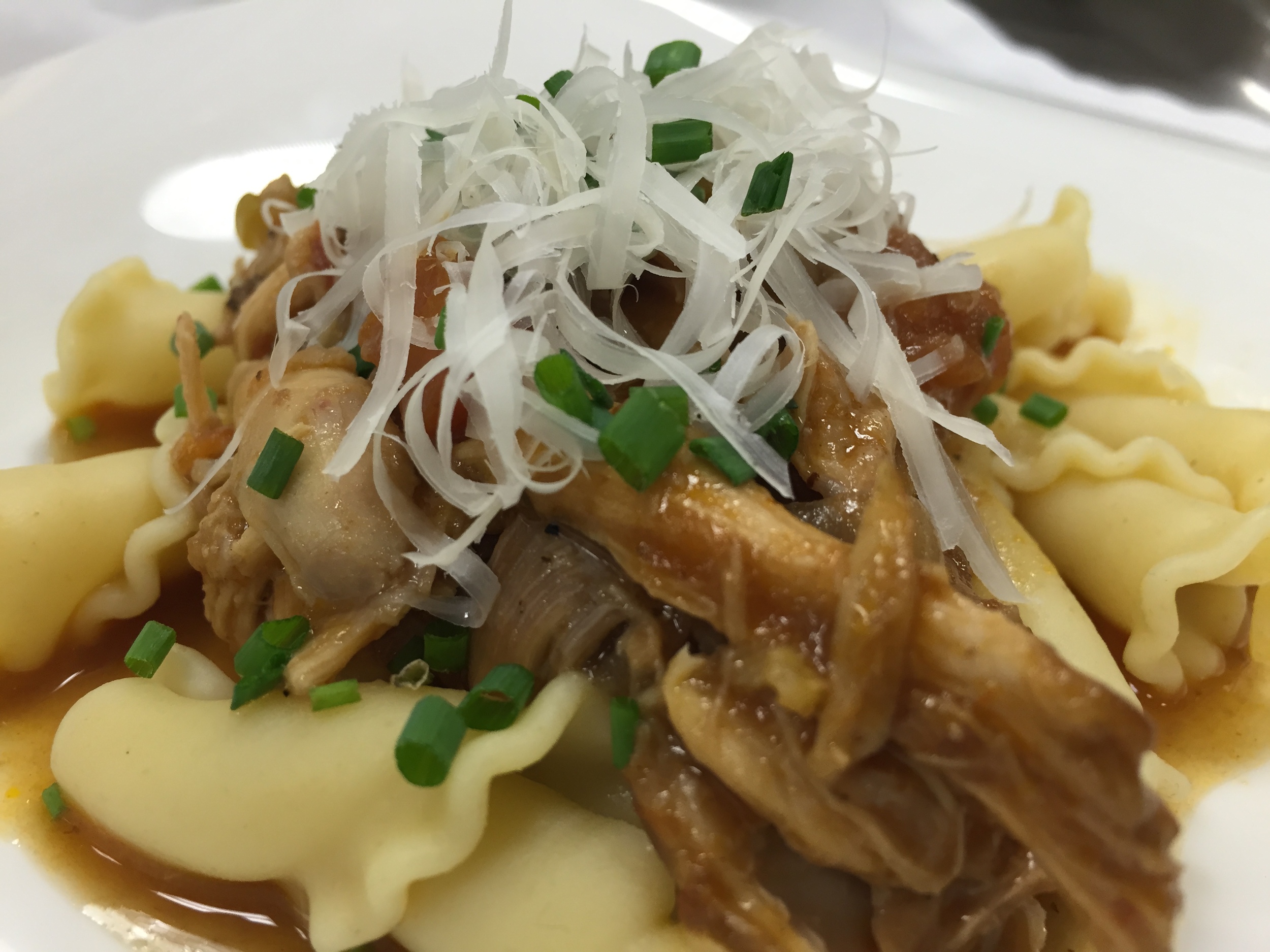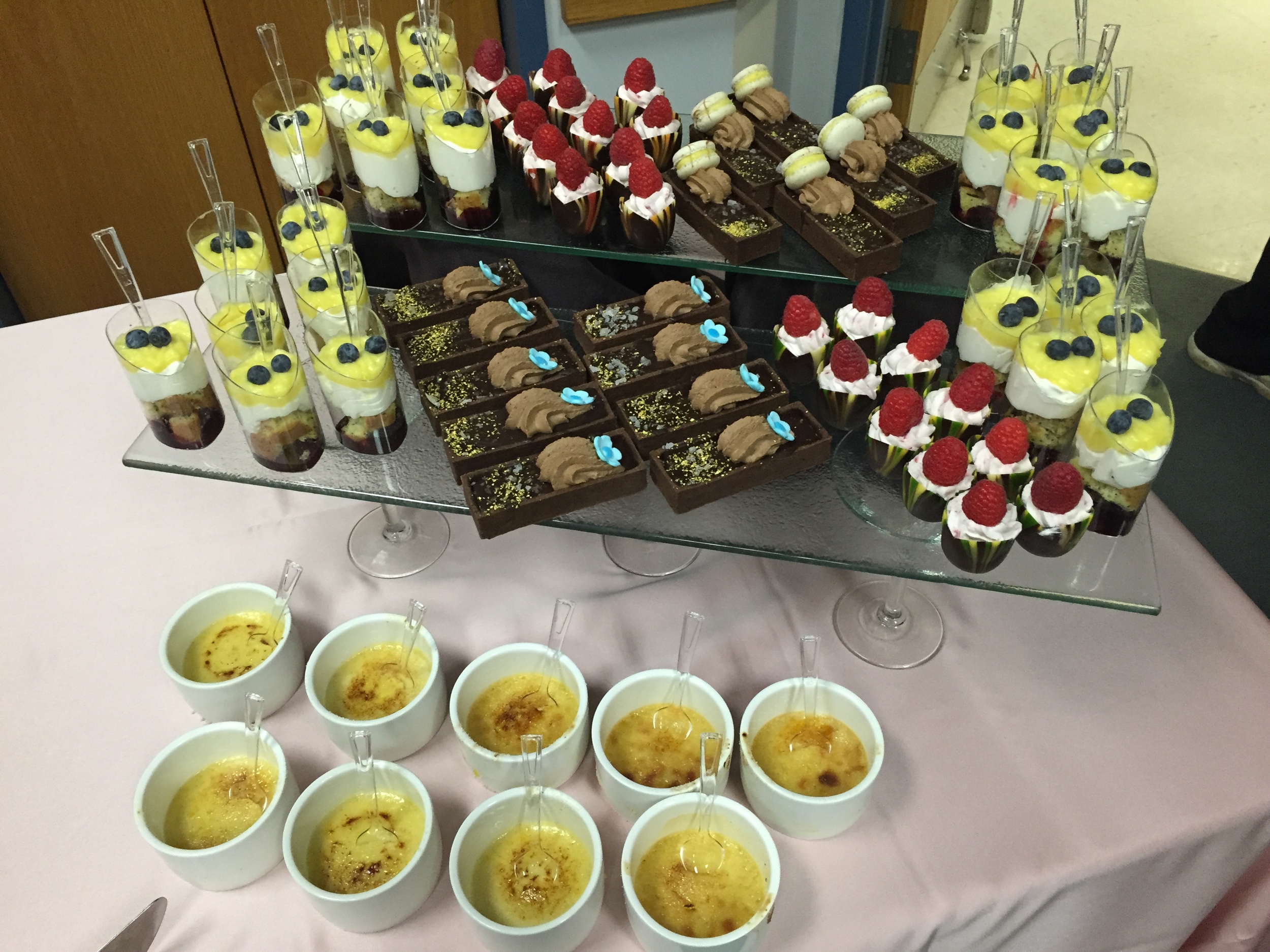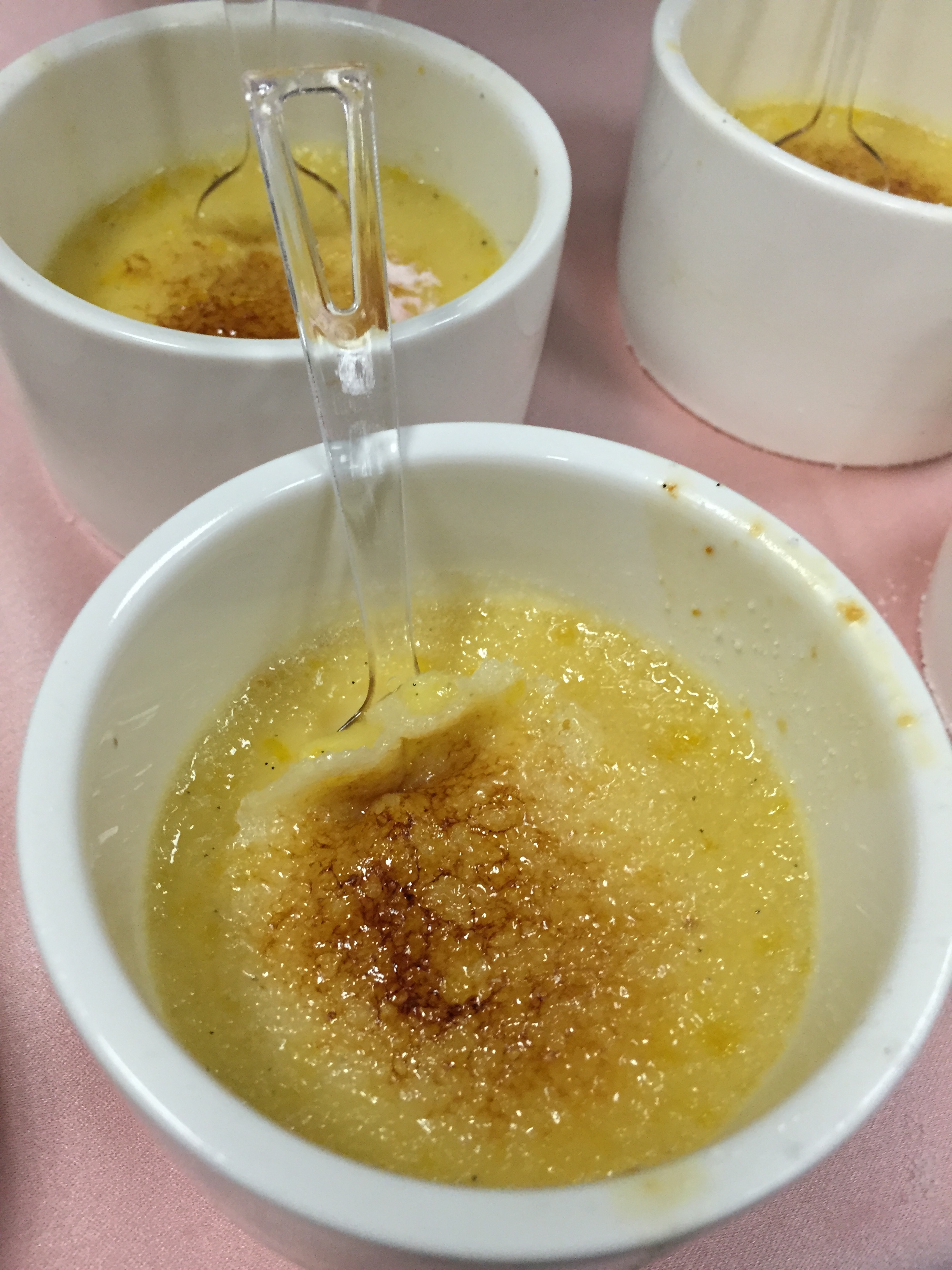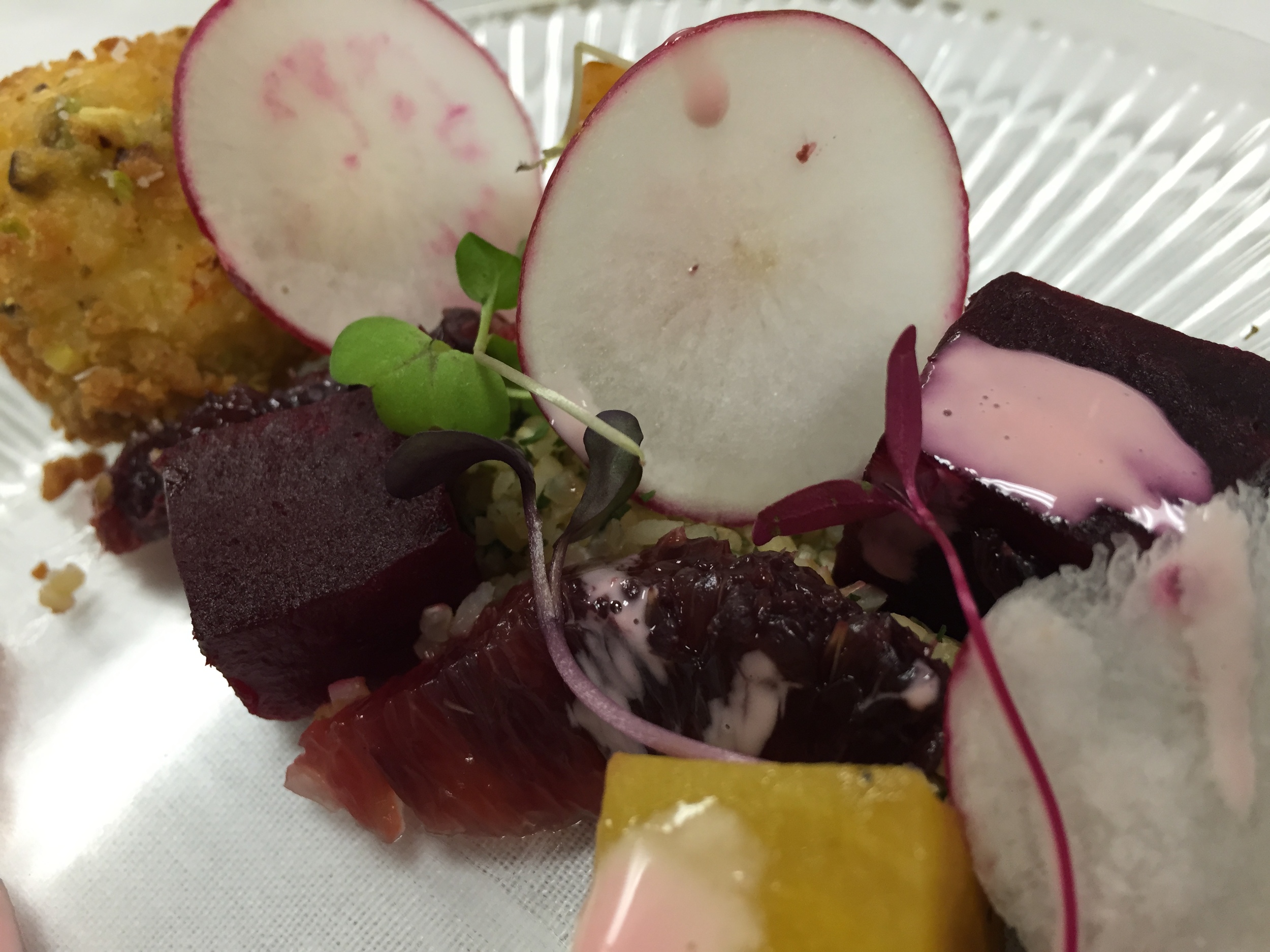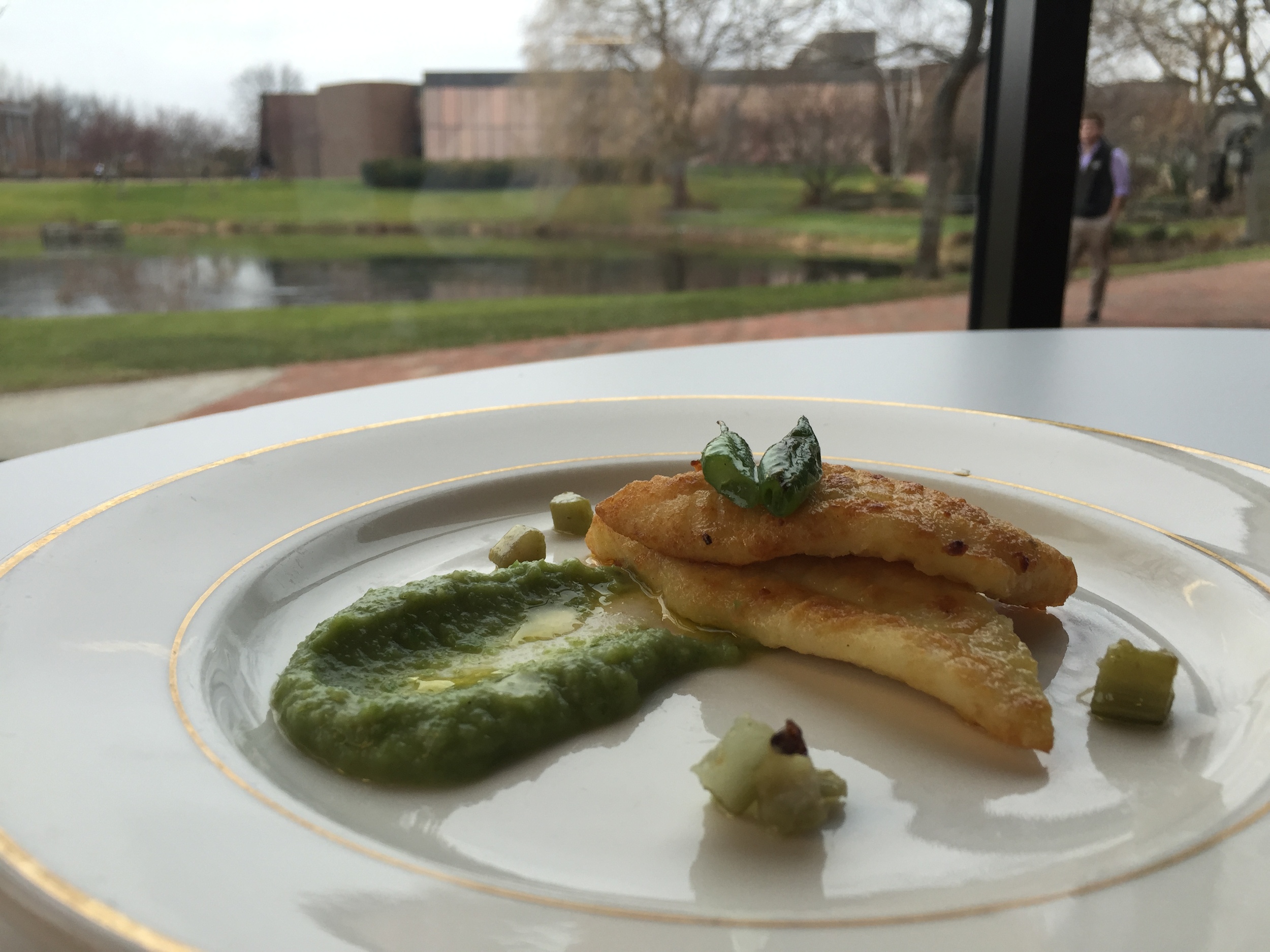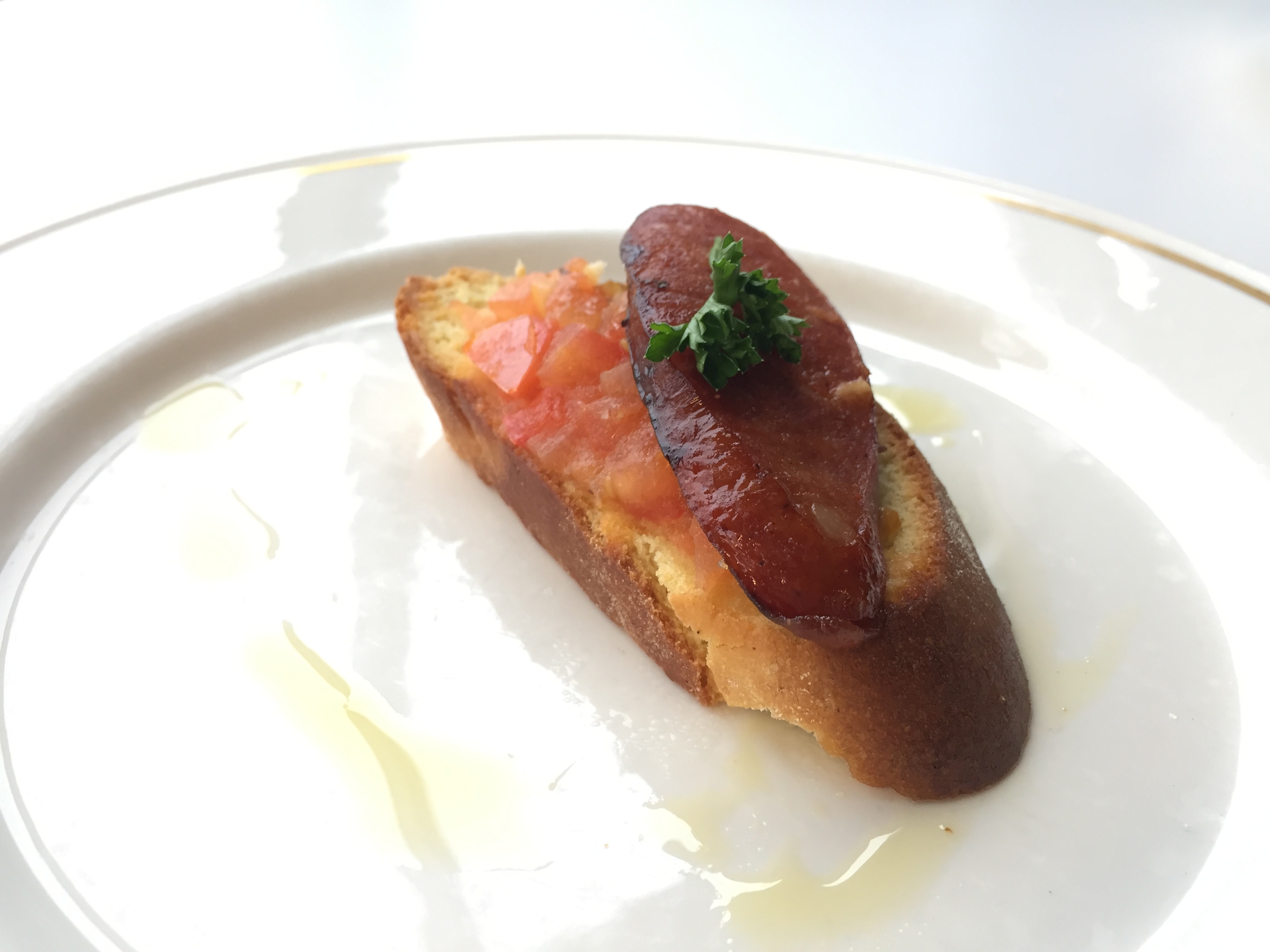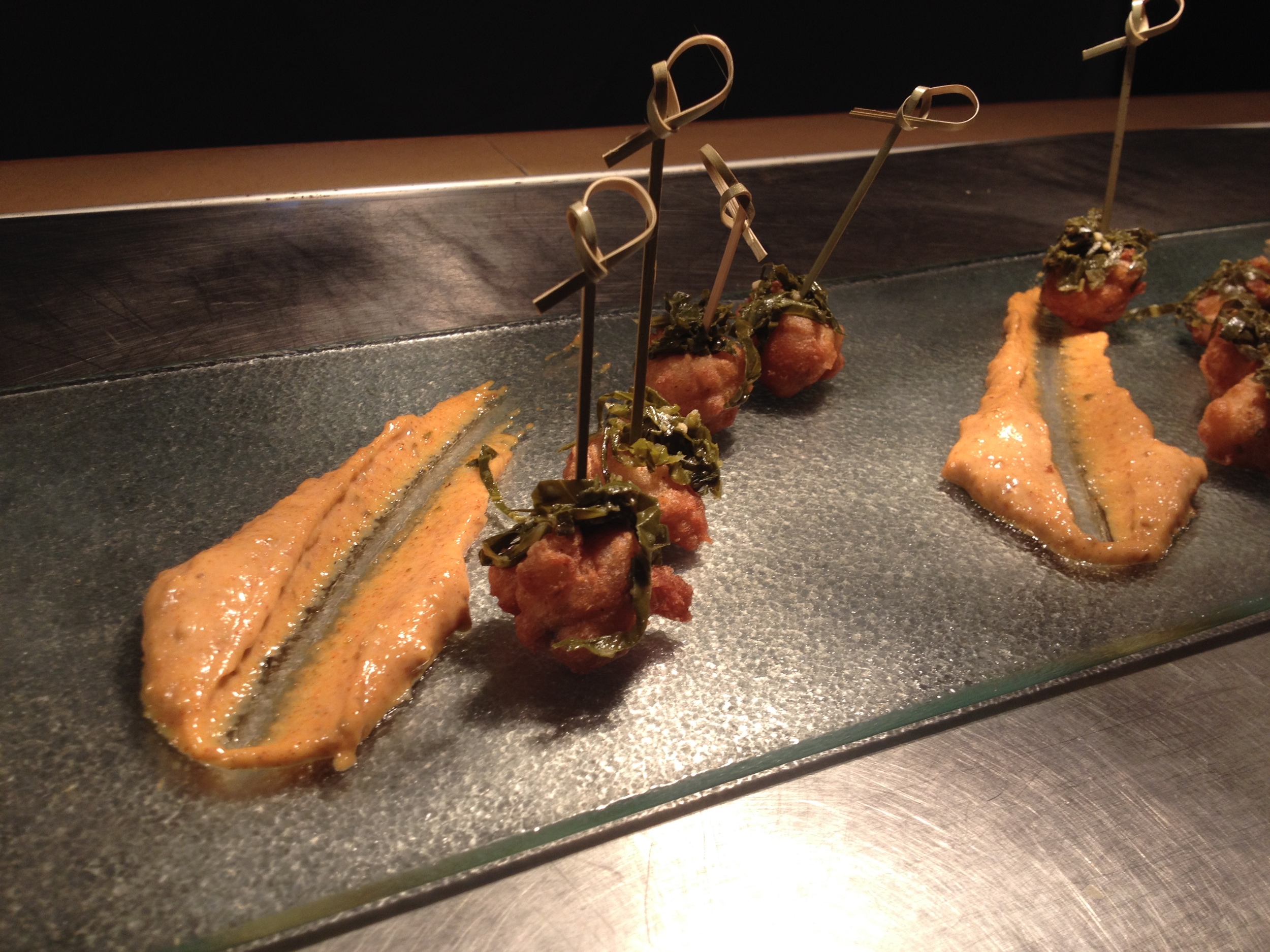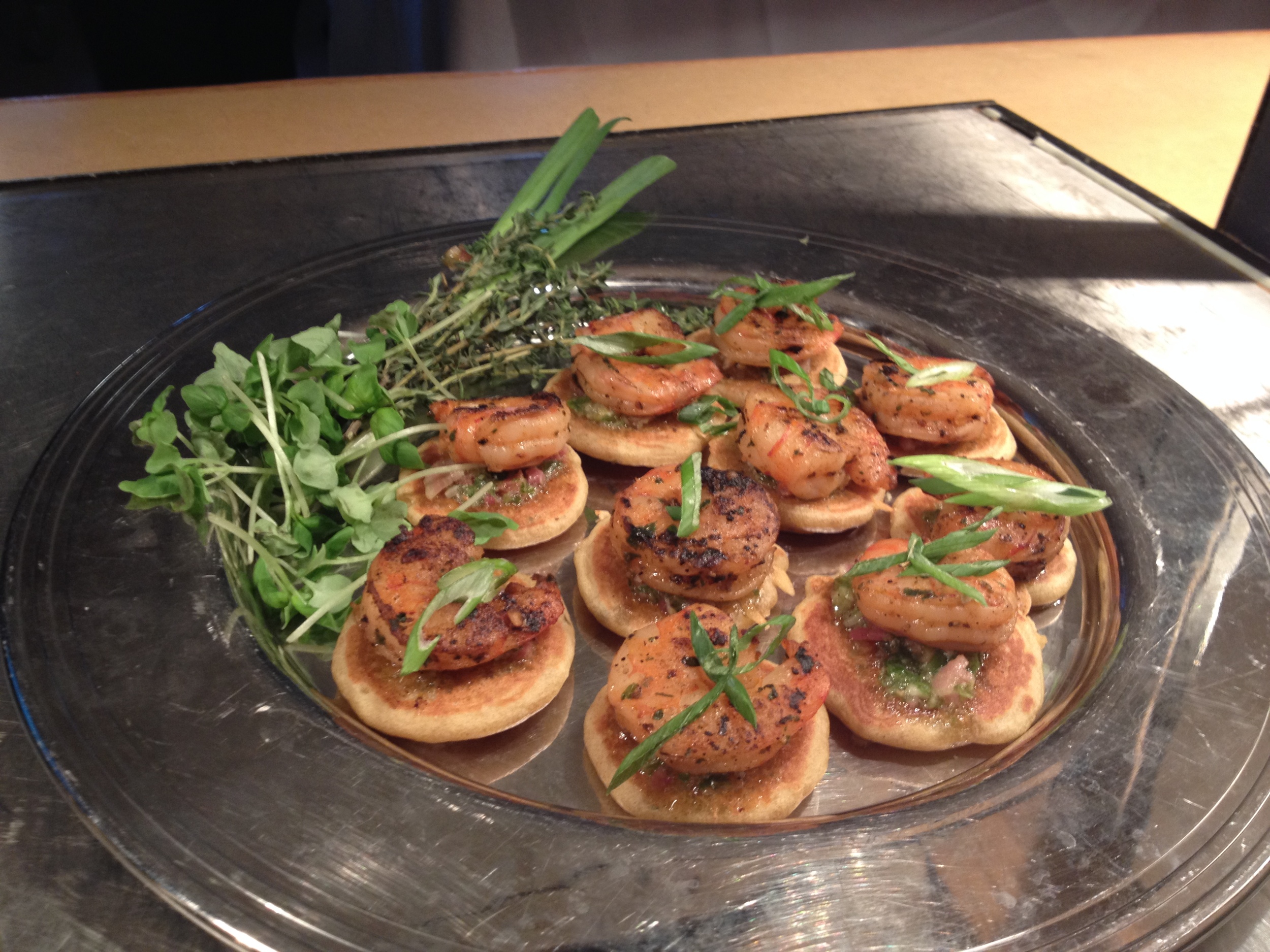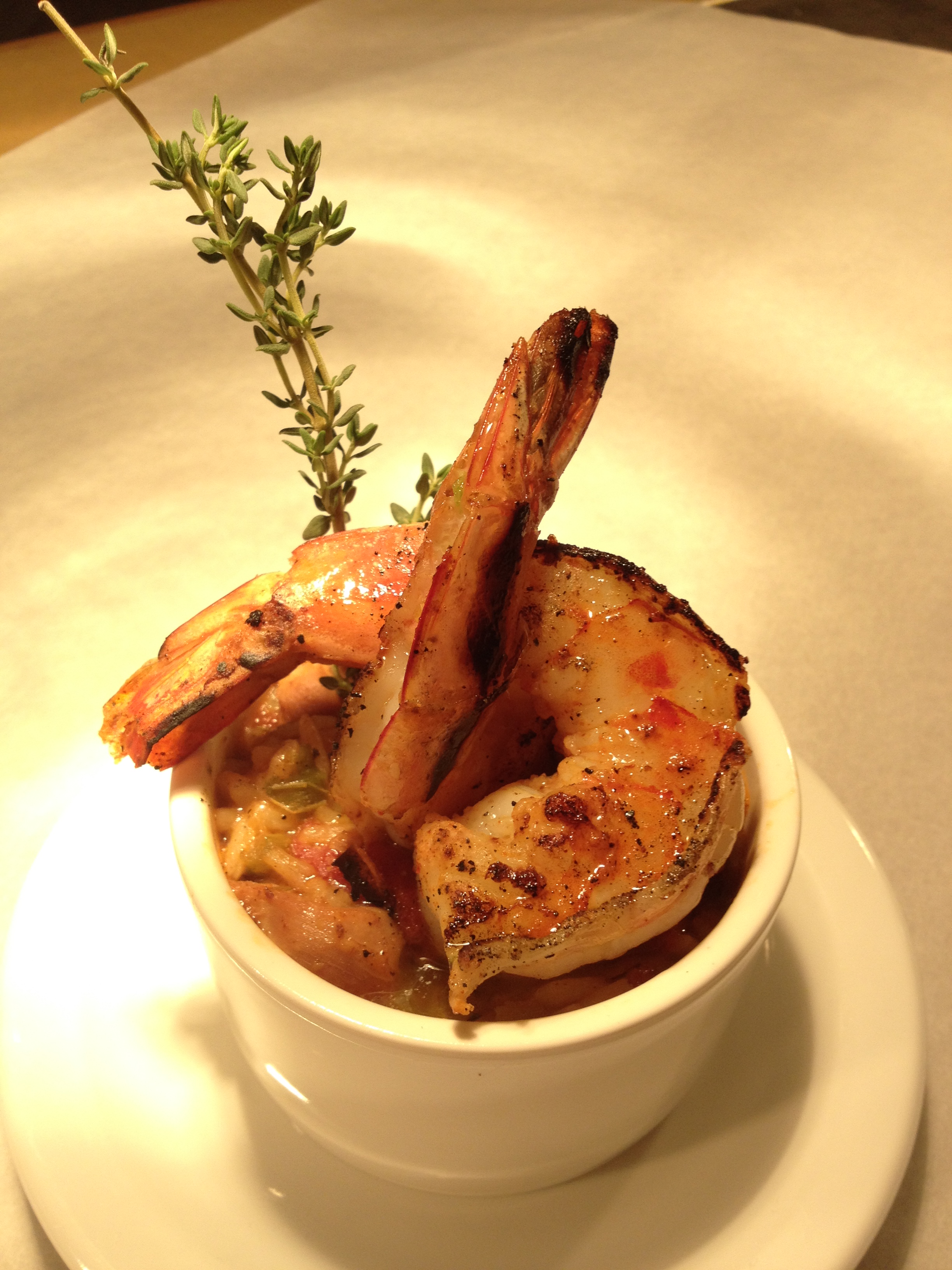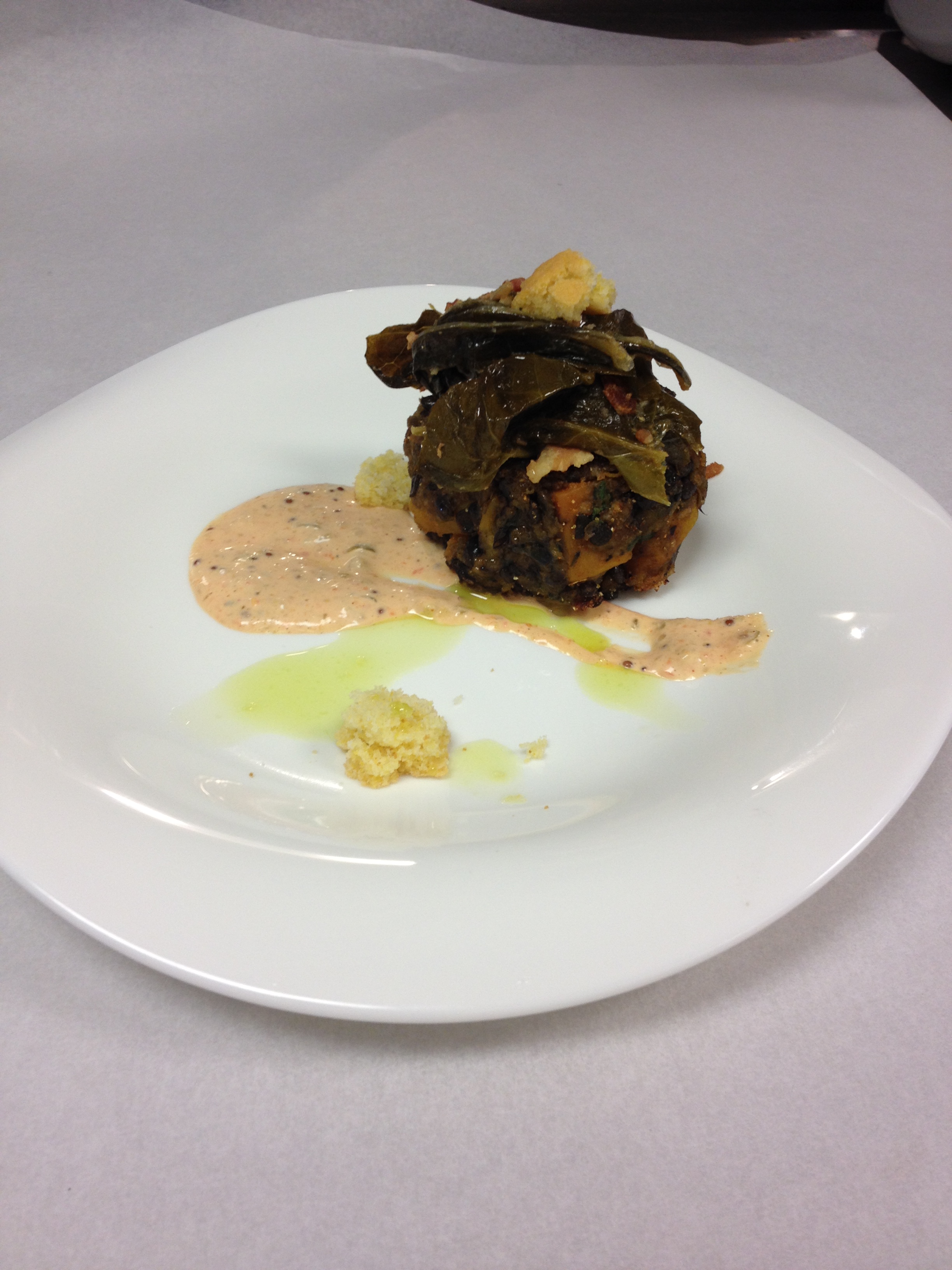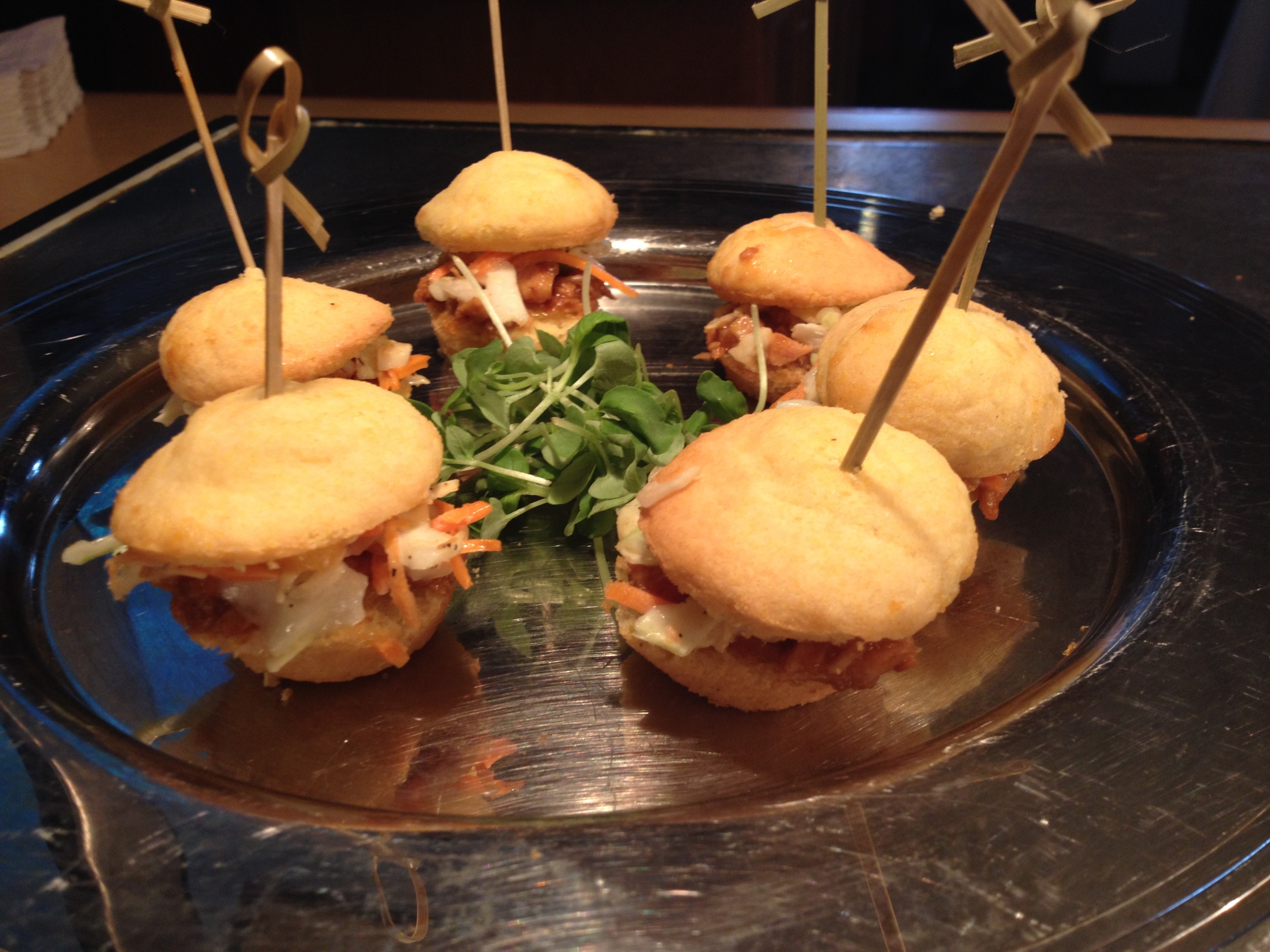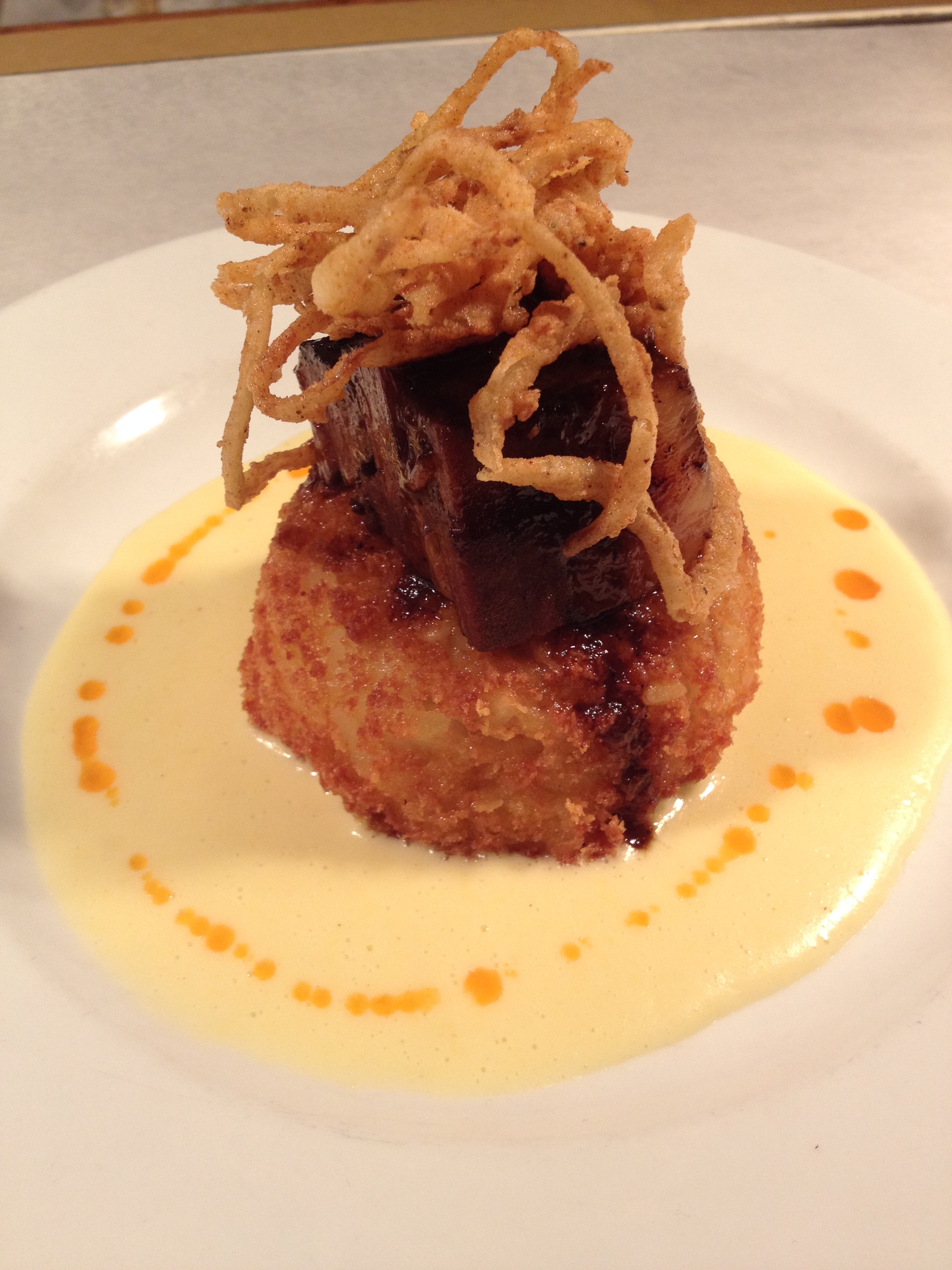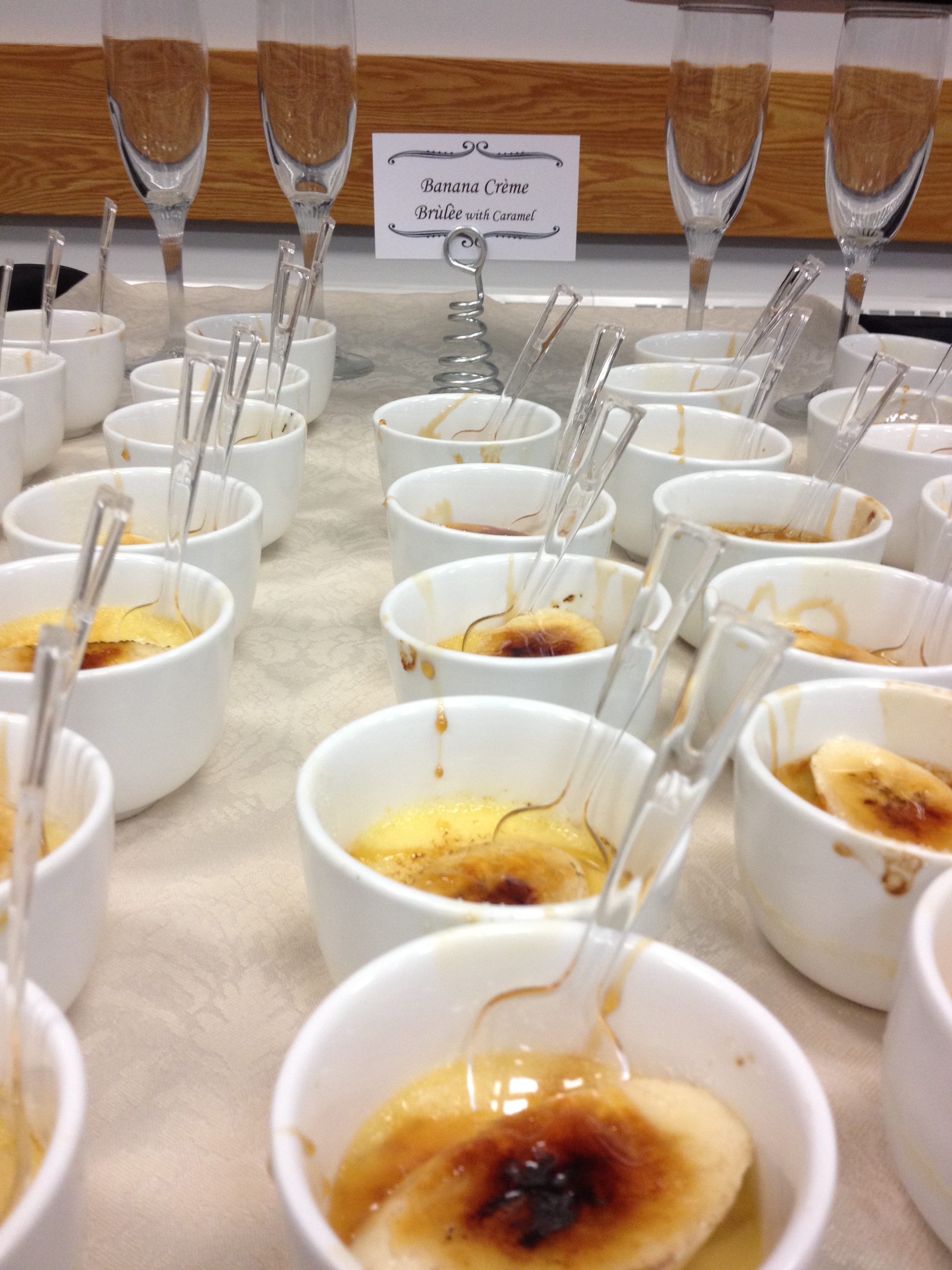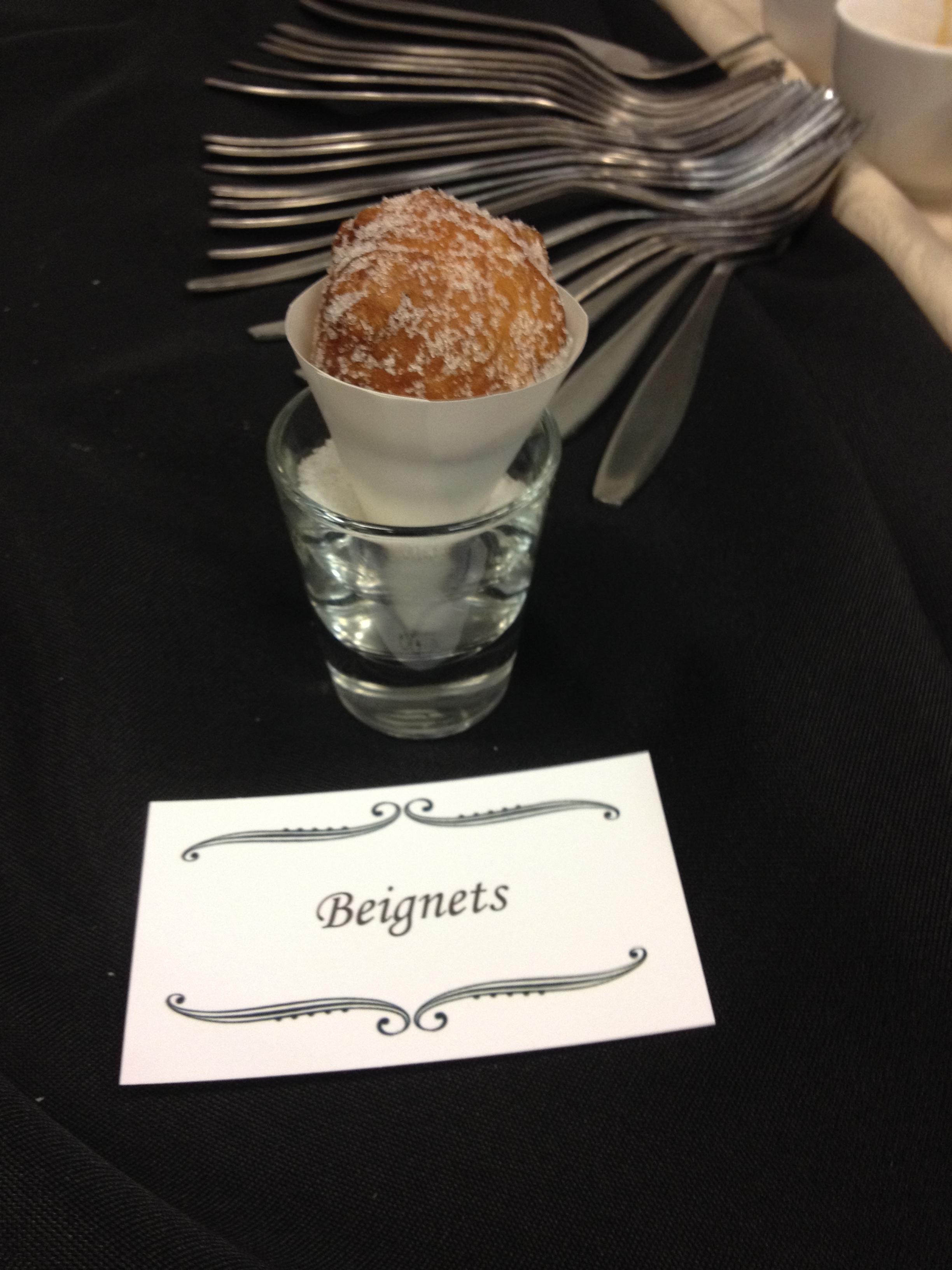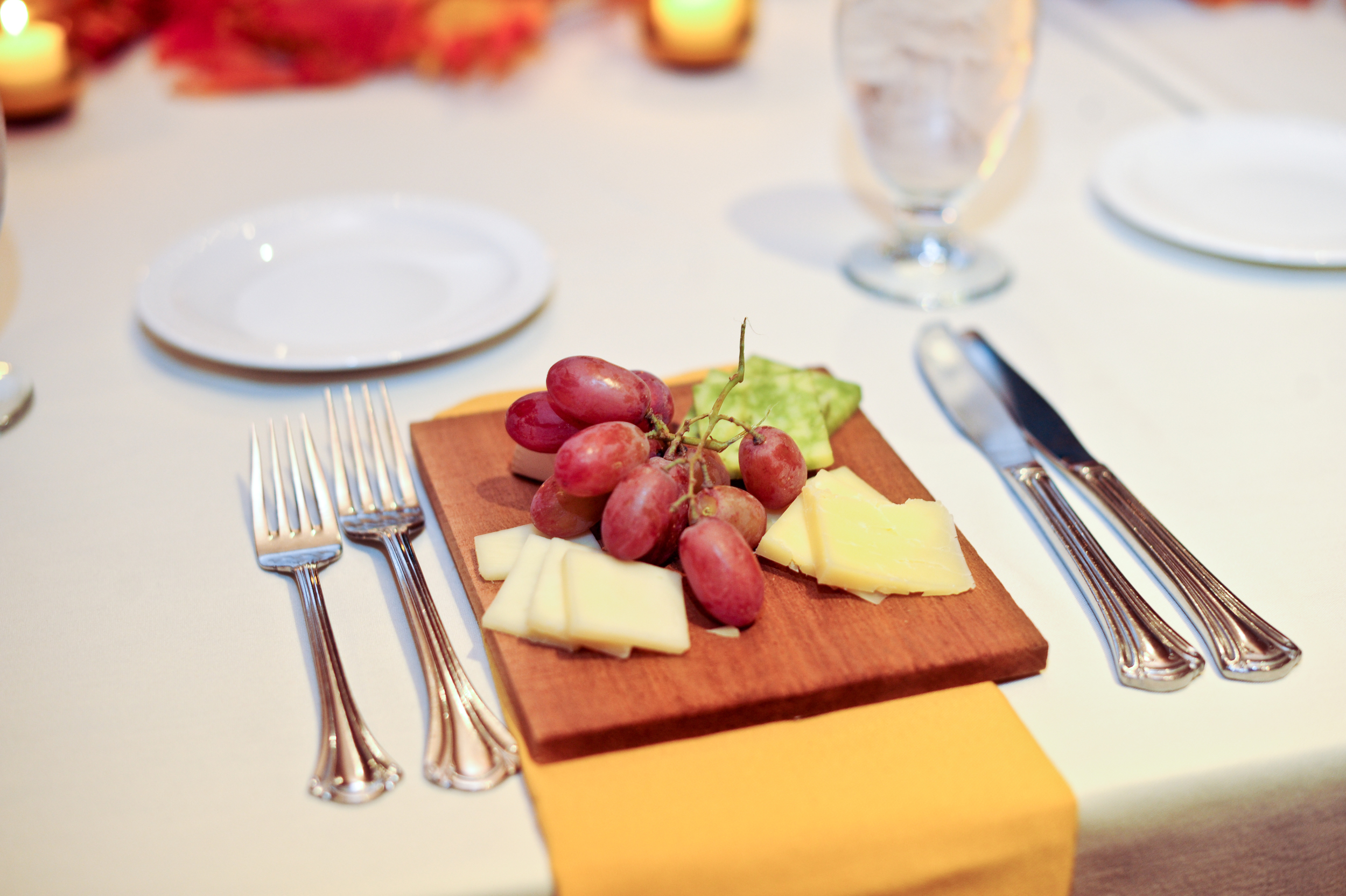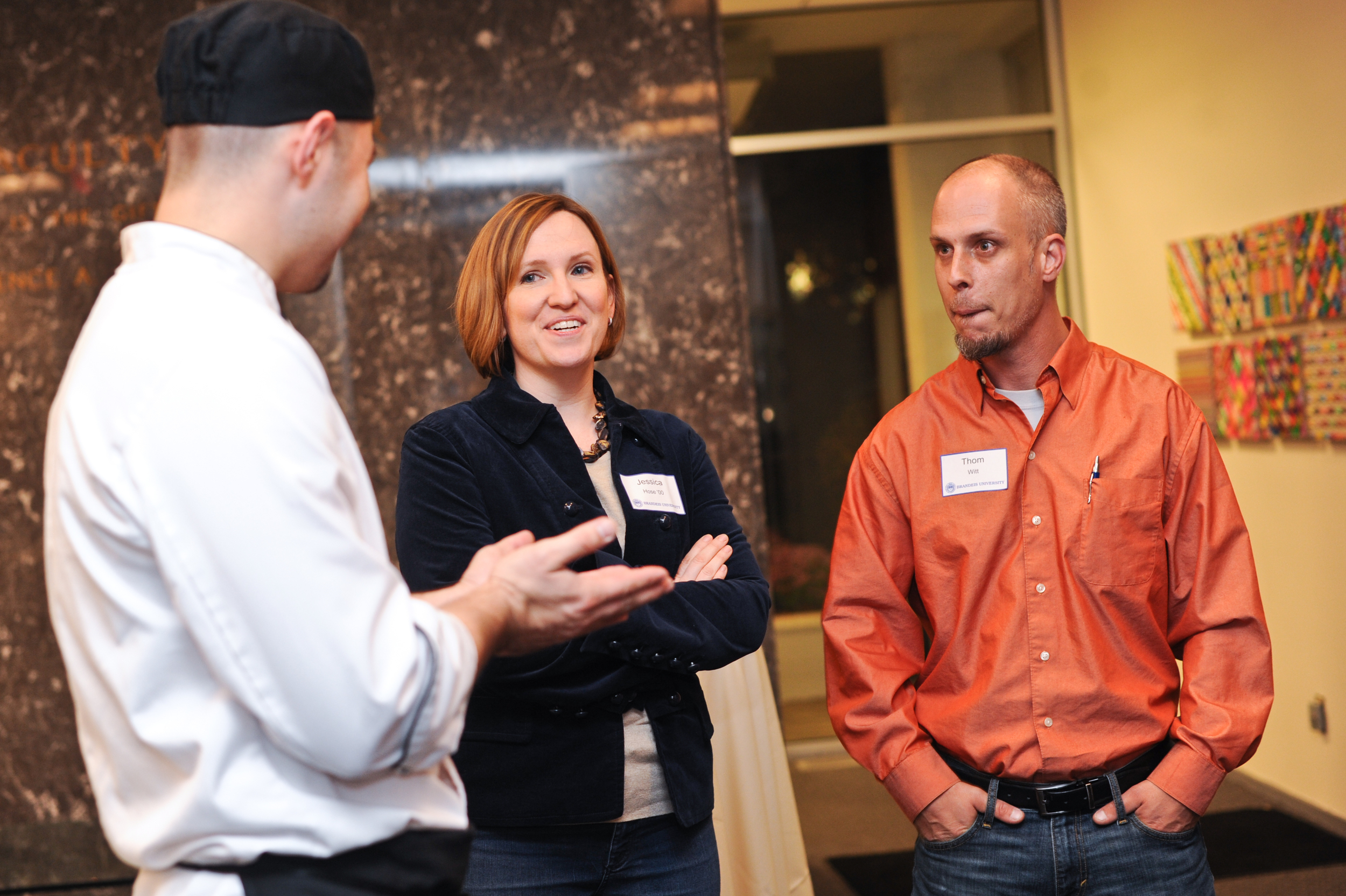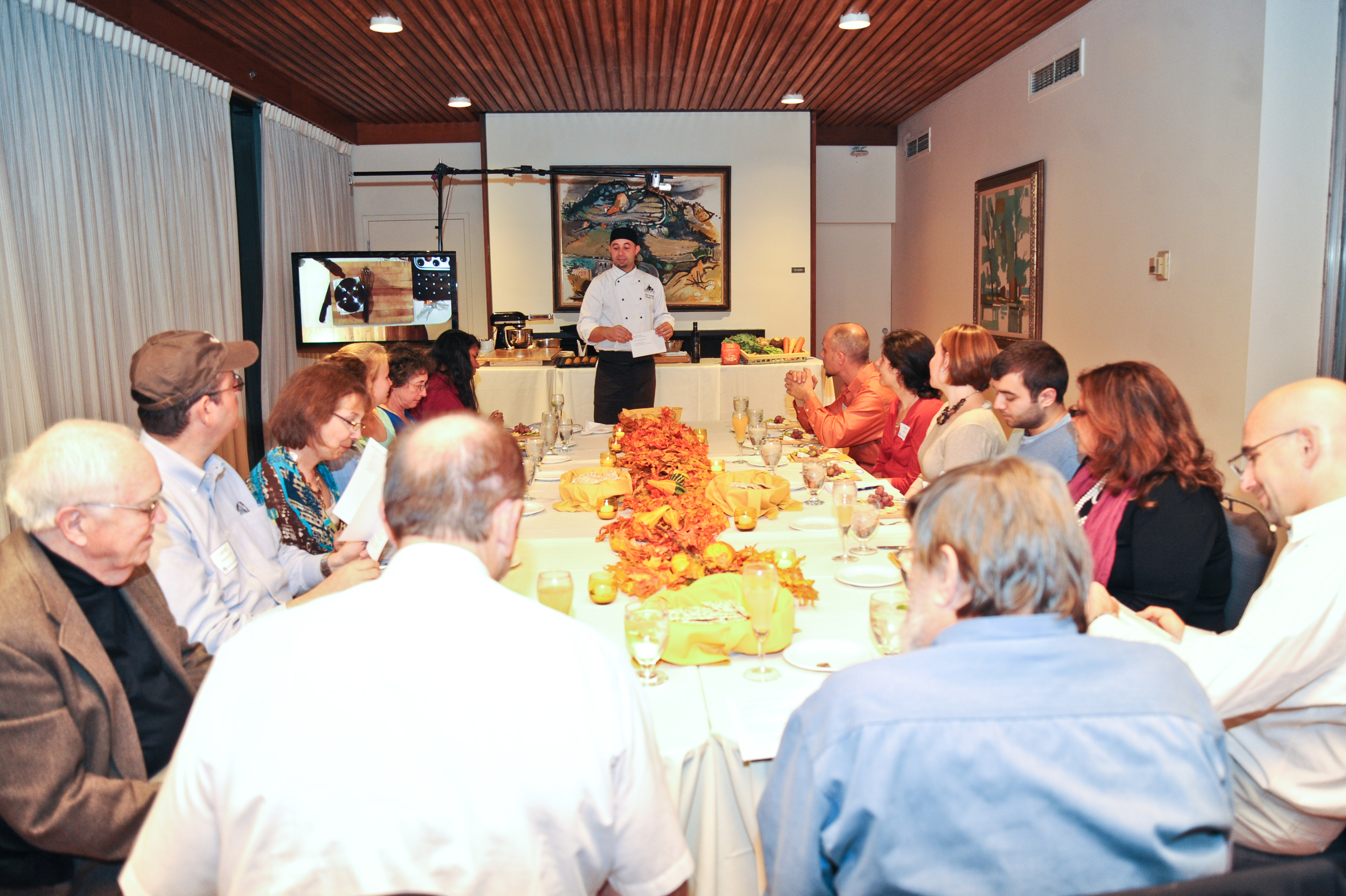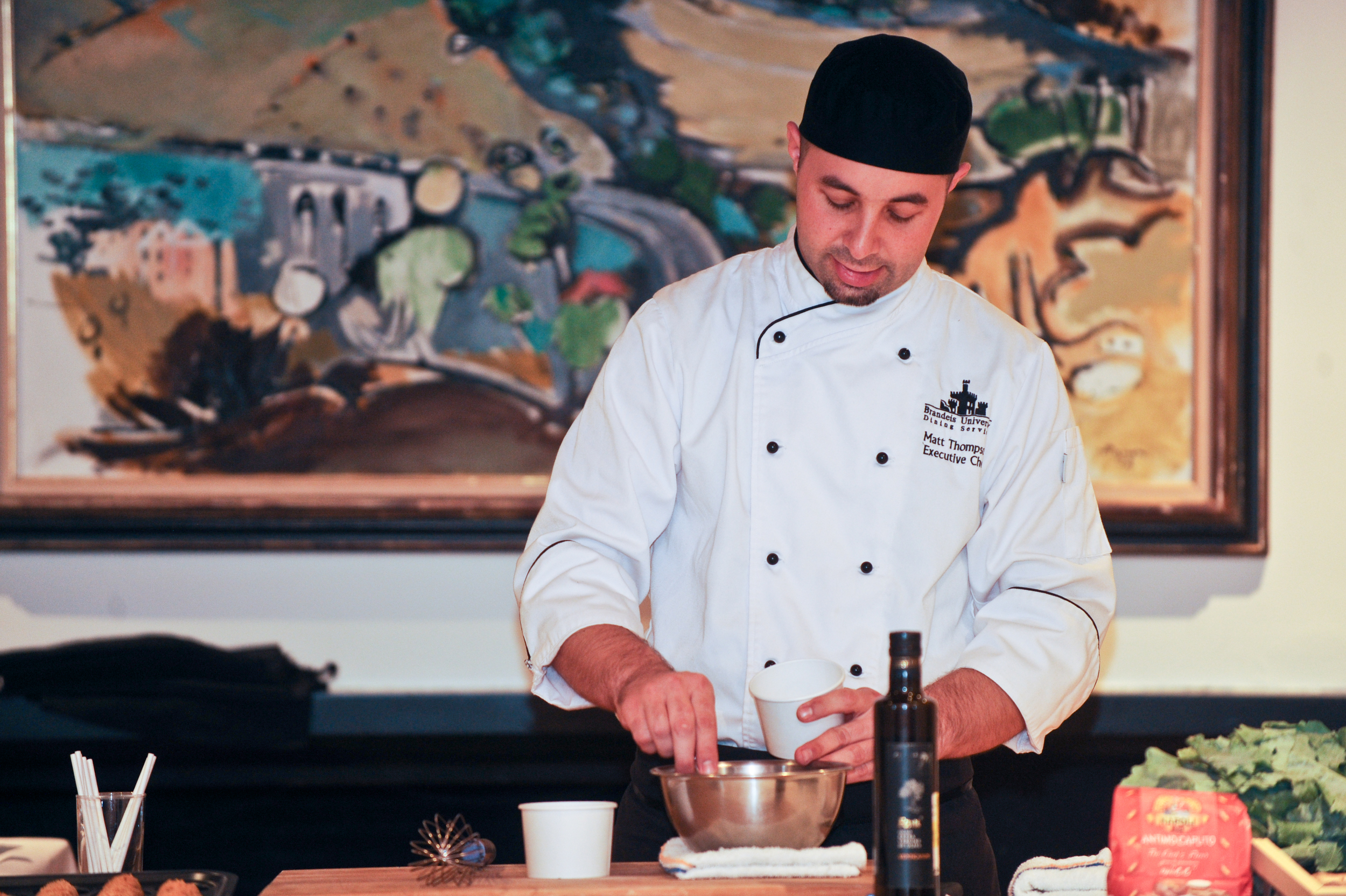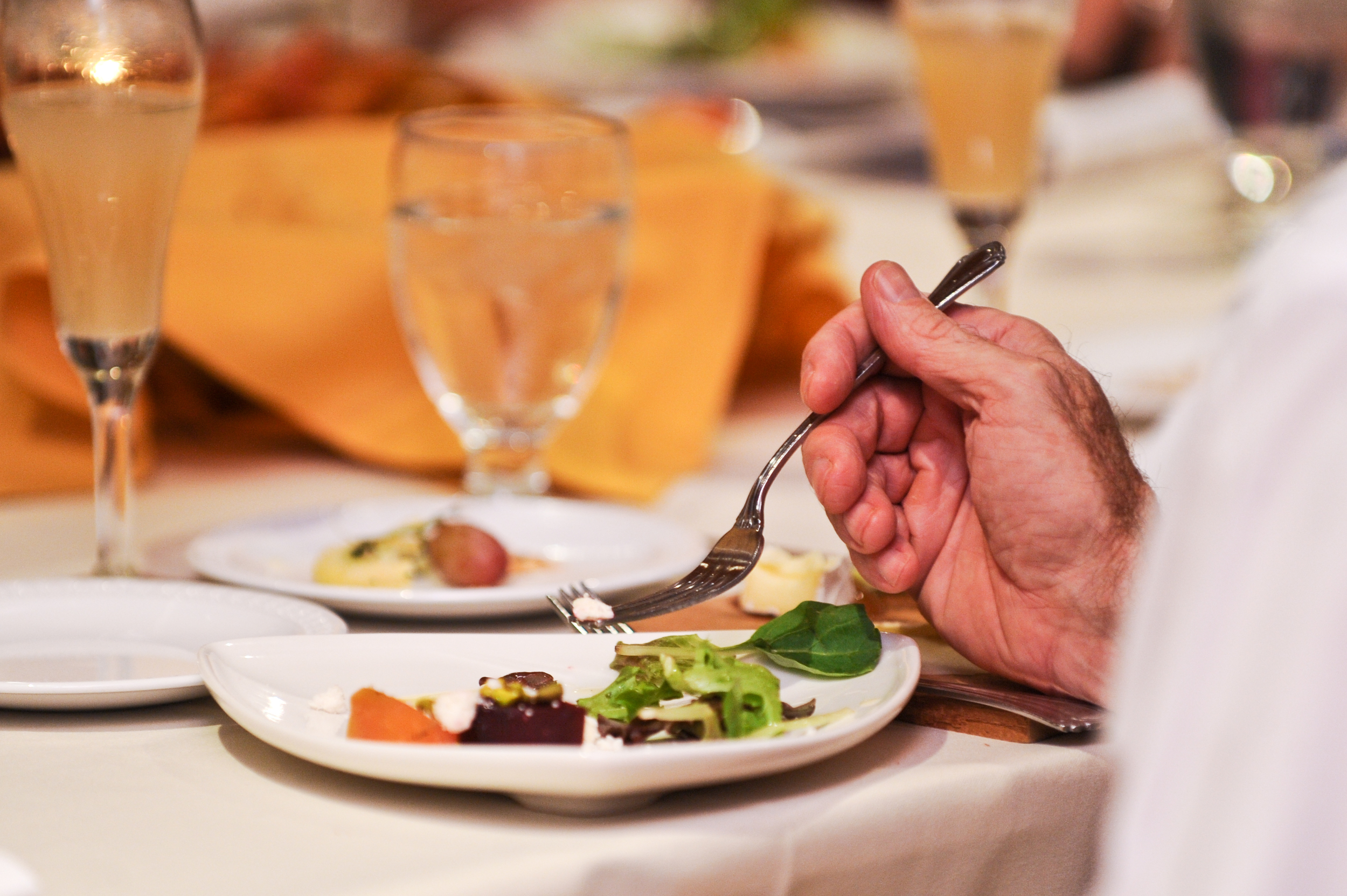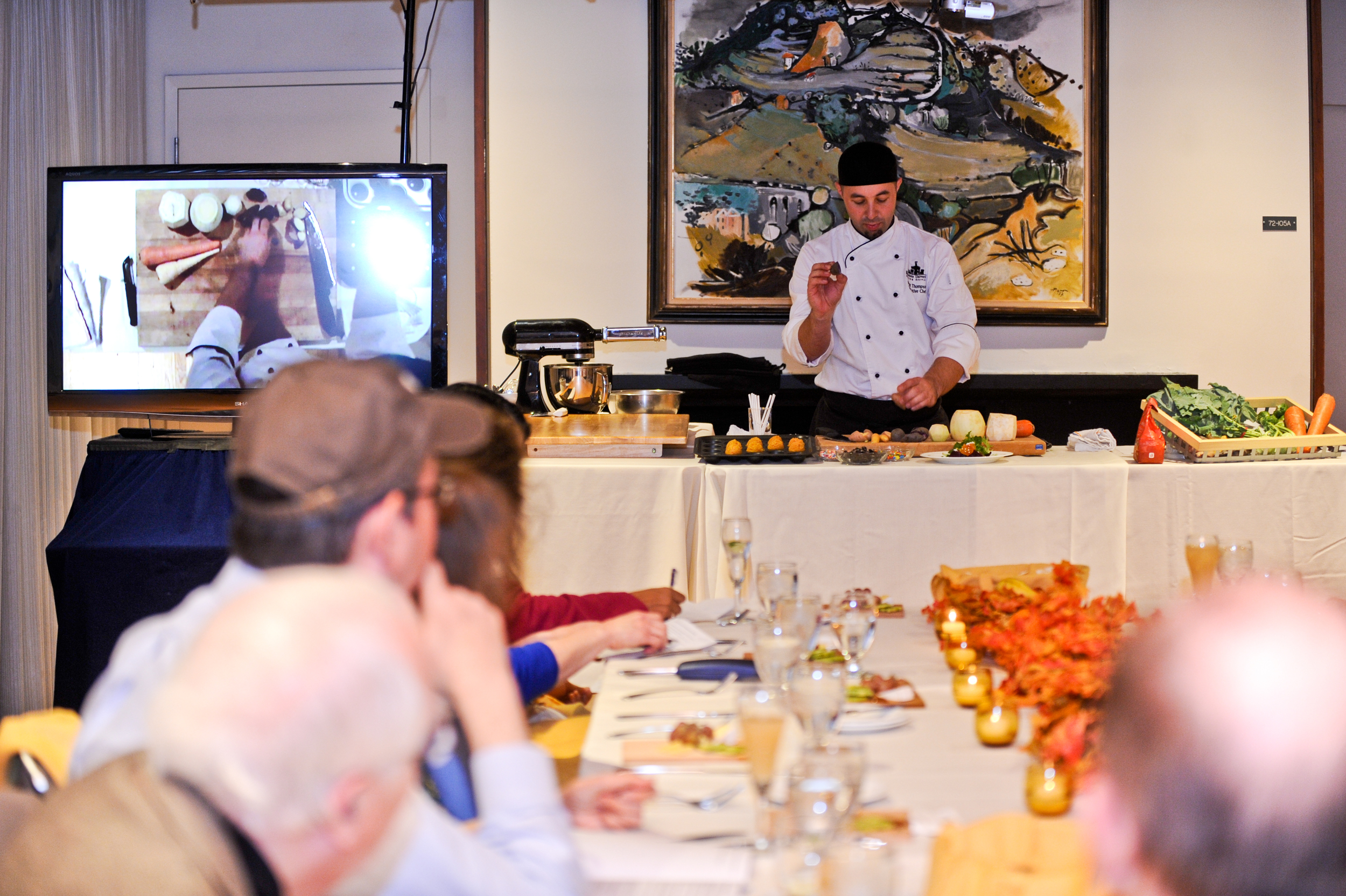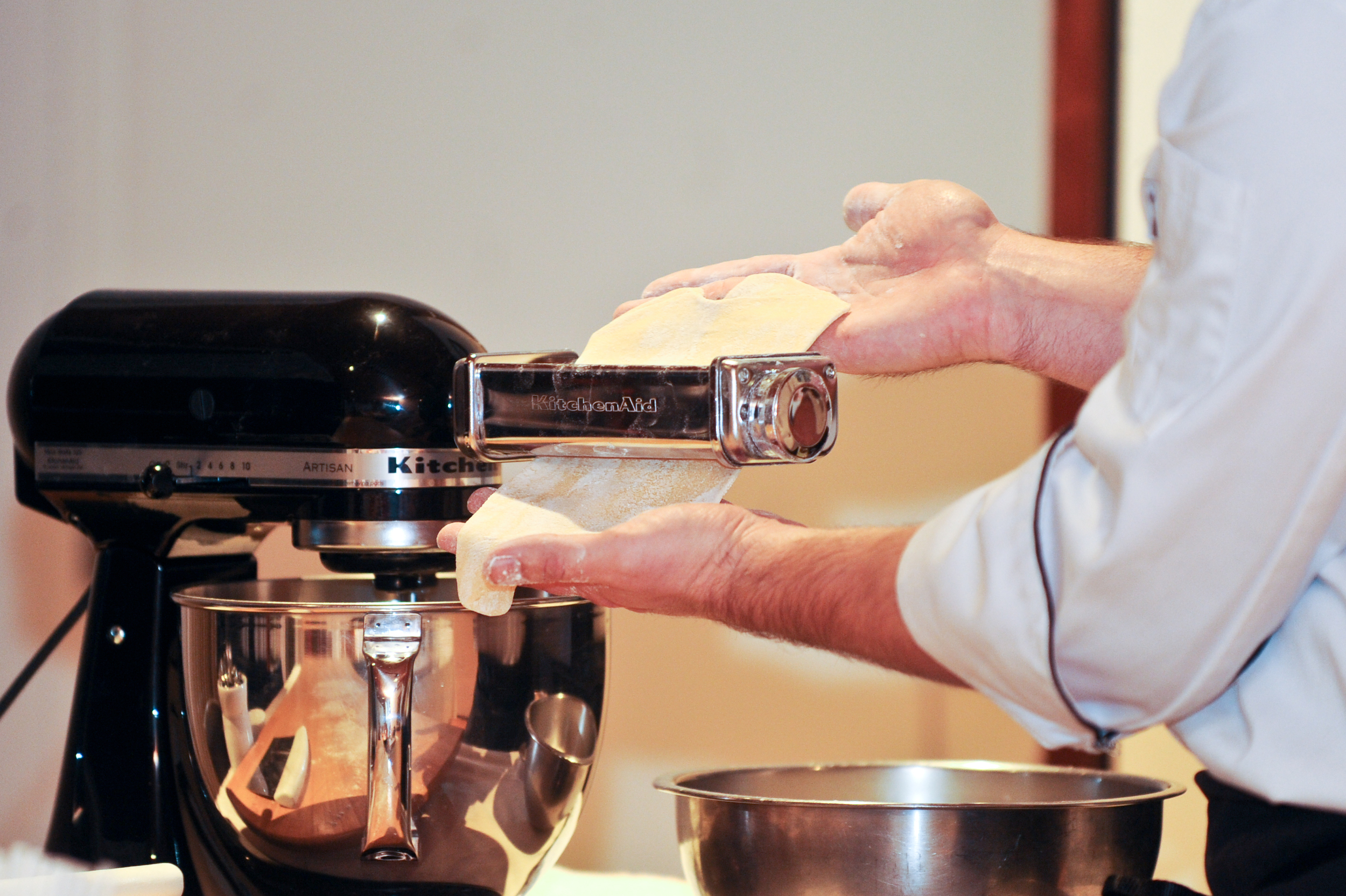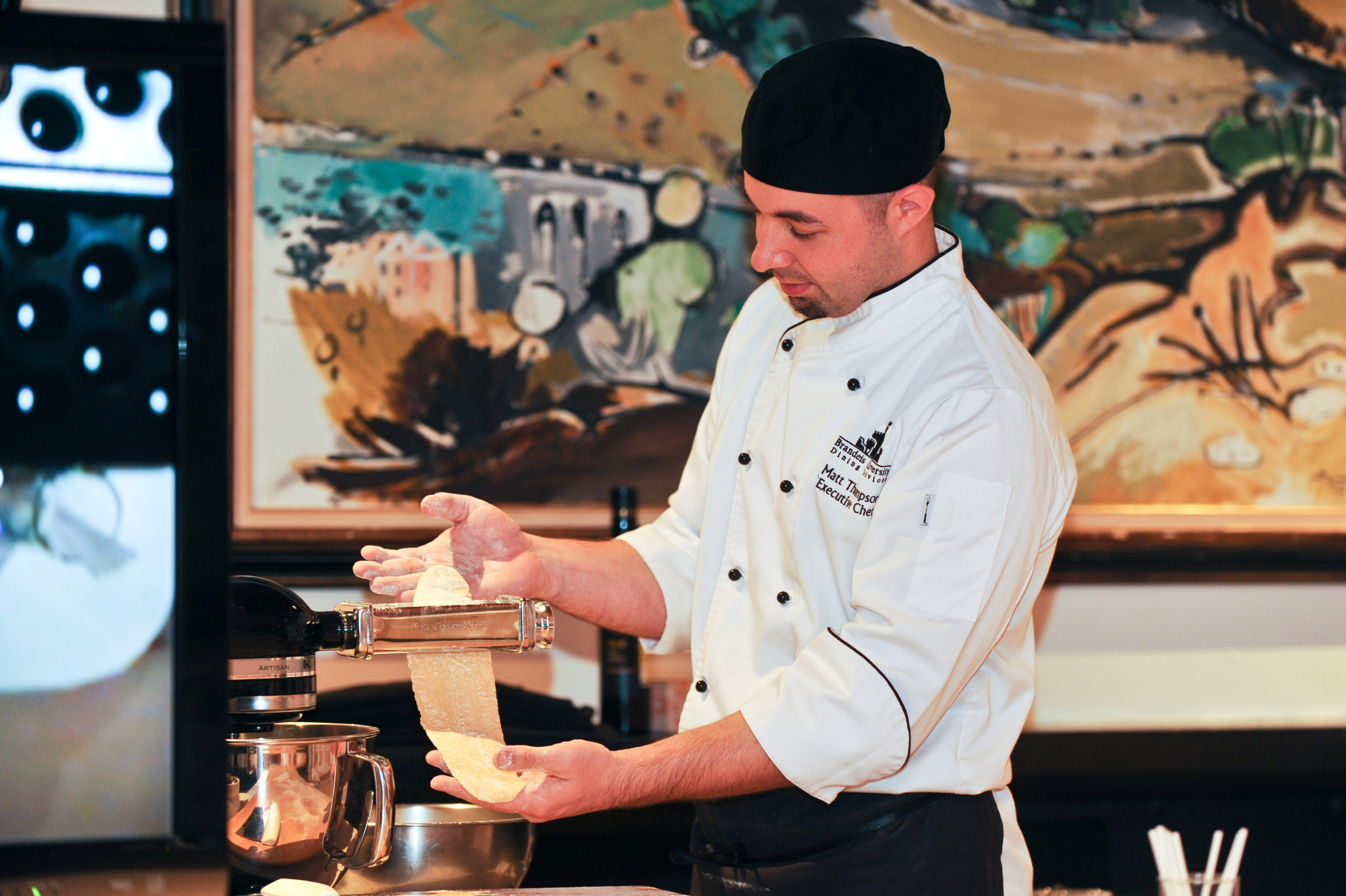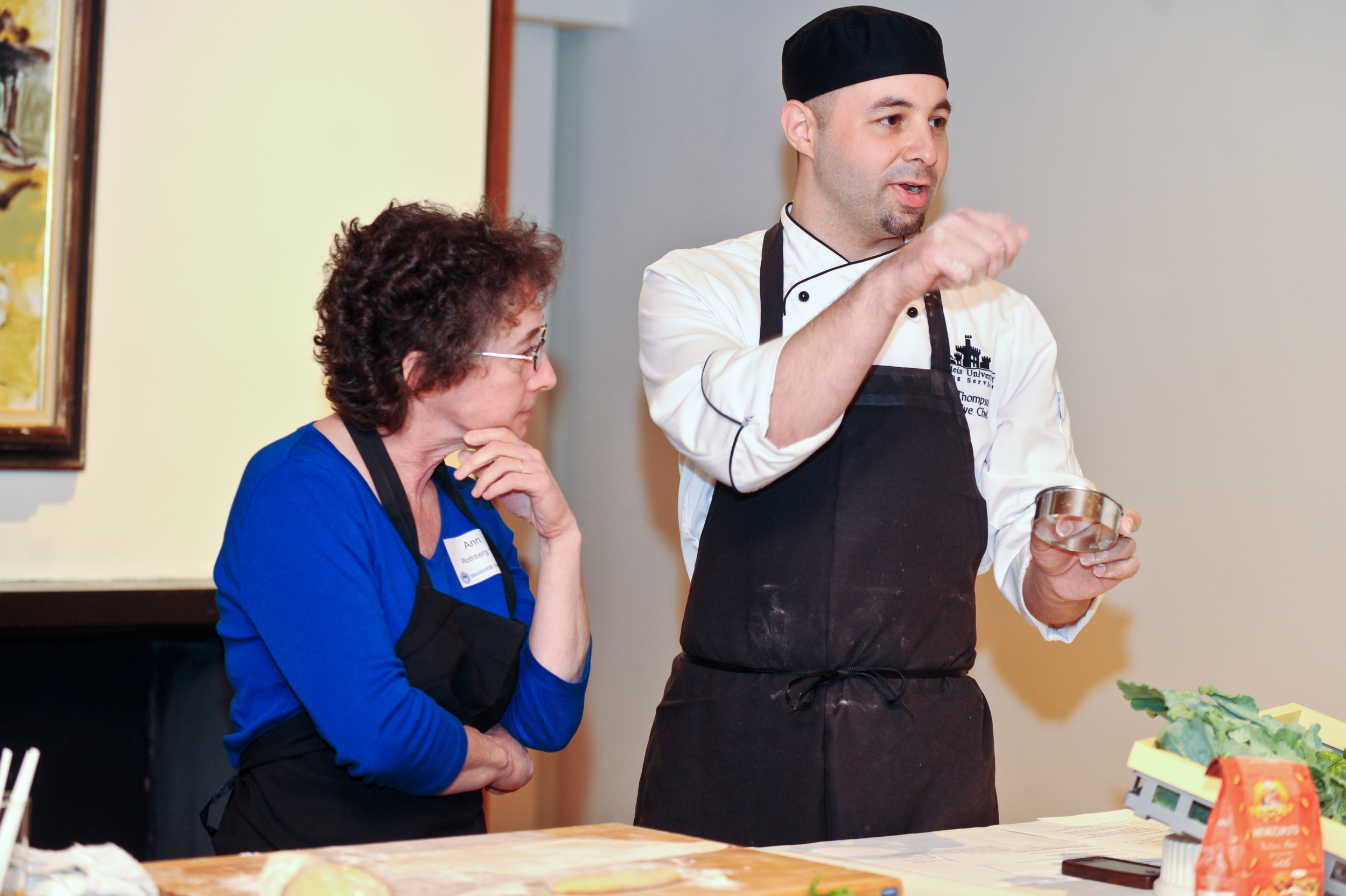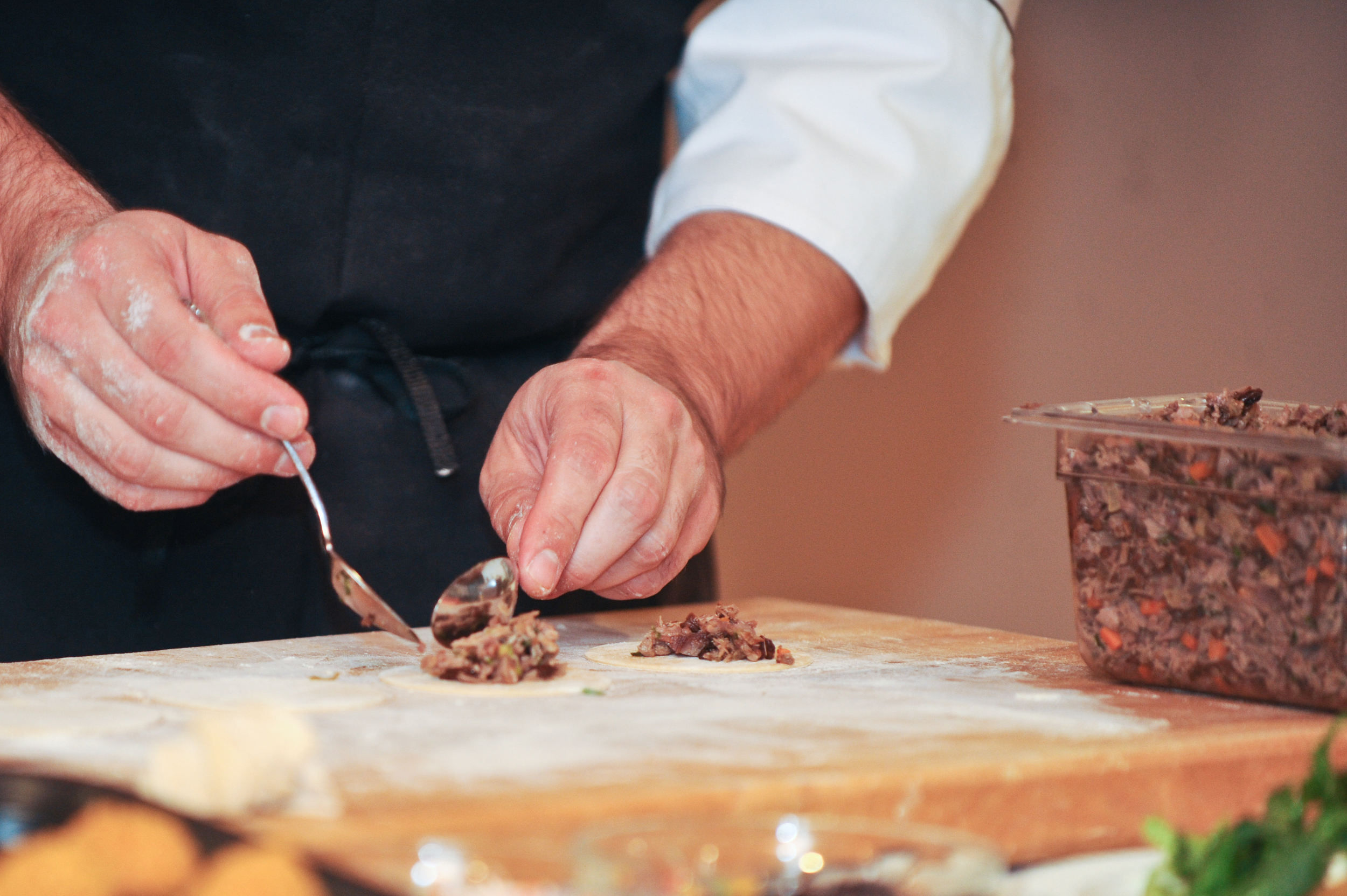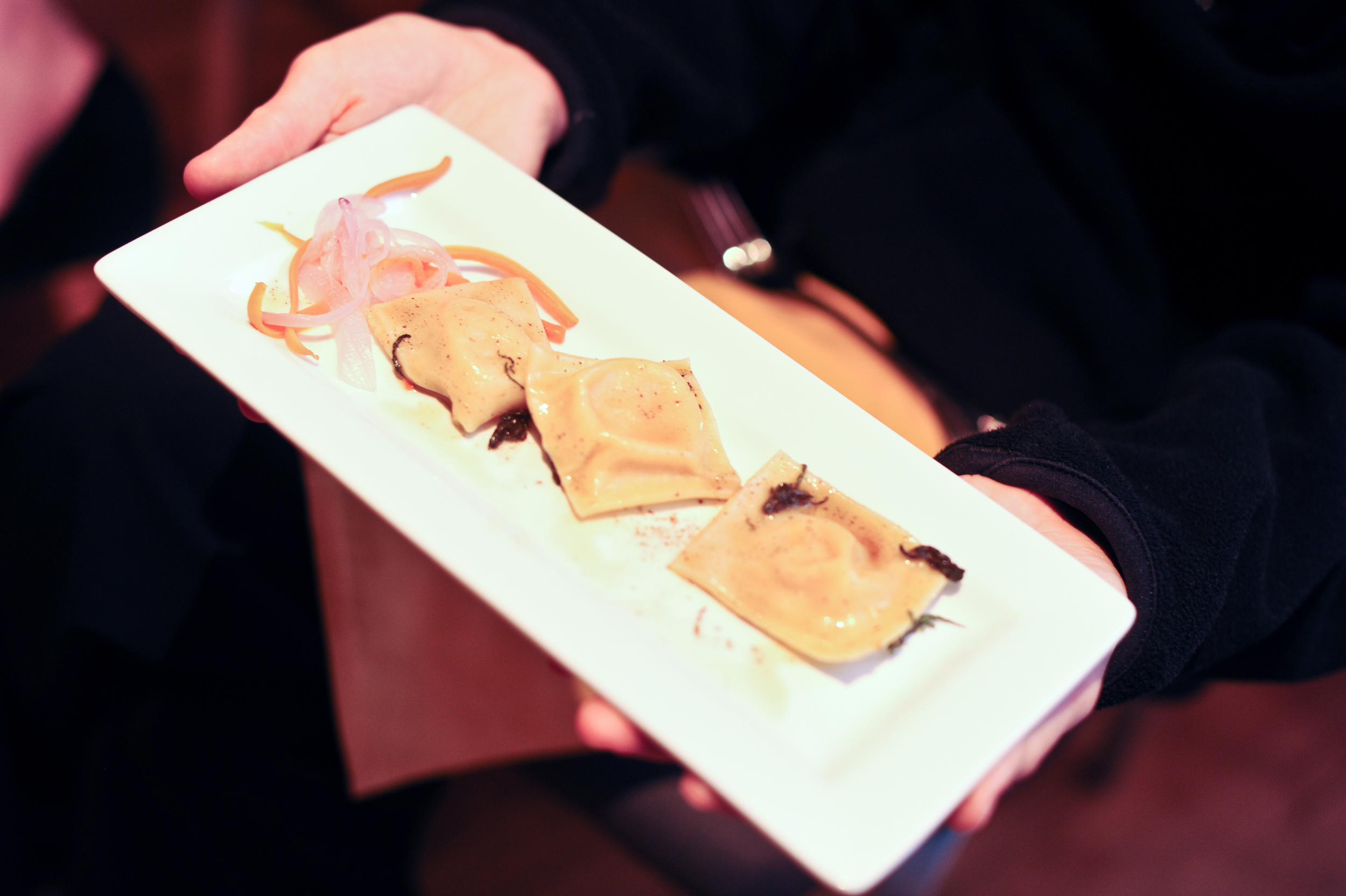The vast majority of Americans embrace an omnivore diet consisting of animal, fish and plant protein sources. As someone who grew up this way myself, -and now am responsible for helping to form the future eating habits of many students today, I've been struggling lately to determine how to make better food choices. By "better" I mean, holistically: focused on health & wellness, least wasteful, conservative impact on our carbon footprint, overall sustainable, etc. Throughout the course of my regular day's work, and of course all the windshield time it takes to drive from one commitment to the next, I have spent lots of time thinking about these topics this week. It seems like all the media I consumed helped me embrace a new aspect of this growing personal philosophy.
I do not, by any means, intend to sound apocalyptic; it is necessary however, for us to consider the bigger picture of what impact sustainability will have -or more appropriately, will NEED to have on our global food culture. We do face some severe challenges particularly in the next 10-20 years when the needs of a growing global population will force an increasingly larger number of us to go hungry. Simply raising more cattle or growing more crops is not going to be enough to meet that need.
To a large degree, we as American consumers do not know enough about where our food comes from. The Gen-Z student as they are now called, are generally better informed then generations before, yet are nonetheless still overall very ignorant. Growing up in a society that predominately has (essentially) global access to grocery items simply by walking into their local market, leads to an almost entitled attitude toward both the accessibility and variety of food. Popular food television has aided in strengthening this sentiment. In one day we can eat foods from all over the world without much thought at all to what it takes to get that food into the nice package at our local Whole Foods Market.
Roy Choi, on The Moth, Listo? discusses an early experience he had with the true nature of what eating meat is really about. At a time in his career when he was just about to graduate from the Culinary Institute of America. He had worked at a number of notable New York City restaurants such as Le Bernardin. Graduating near the top of his class, he thought he knew everything about the food industry. -but don't all Chefs?
Upon graduating he got recruited for a job in California. It was here he met Salvador, his dishwasher. For those of us with work careers in the food industry you know, this is the position that keeps the whole machine moving. Like most of us in the kitchen you learn enough "kitchen Spanish" to get by. One day Salvador said his family wasn't able to help and could Chef Choi help him out? Without understanding or really knowing what he was supposed to help with Chef Choi agreed.
They traveled in an old pickup truck to a farm where Salvador purchased a goat. A beautiful animal with silky white coat, little spots of brown, and small little horns. Chef Choi had no idea why the goat was being purchased. He was simply along for the ride. He thought they were picking up a pet. Driving back home, the then let the goat out. Chef Choi began to look around the yard and slowly started piecing together the clues. Salvador began filling empty Corona bottles with salt and water. It was pretty early in the morning. Chef Choi saw a table with knives on it. A rope hanging with a hangman's noose. Salvador said "Listo?" and so it began.
The pursuit was on. They started running after the goat. Finally, jumping onto the goat Salvador put it in a headlock. He began to rapidly feed the solution of salt water to the goat. After drinking, things changed very rapidly. He wrapped the rope around the goat's legs, and pulled the goat up. While the goat stared Chef Choi in the eye, Salvador slit the neck. Blood poured out, and the animal was bled out. It was then split down the middle, gutted and its hide removed. Salvador reminded Chef about the bottle of water. The purpose of the salt solution eliminated the smell of the guts as the animal was gutted. They quietly broke the goat into primals and subprimals, packaged it on ice, and drove south and hour to Salvador's mother's restaurant. In the traditional way, she taught Chef how to make goat stew. Chef Choi recounted the feeling as he drove home; he felt like a different man.
How many of us have had a personal experience like this to truly understand where that nice piece of meat on the foam tray in the supermarket really came from? What type of appreciation do we have for respecting the whole animal -the one who's life was sacrificed to nourish ours? All too often do I see people turn up their nose at chicken thighs, THEY "only eat breast meat." I'm flooded with thoughts of Chefs who actually would fight over the thigh opposed to the breast for it's flavor and culinary value. Not to mention all the other "bits" like beaks and feet, or snouts and tails, which impoverished countries frequently have as part of their staple diets. Lastly, I think of the hungry who simply have nothing. Makes me pretty quickly want to choose fish over meat.
In a Ted Talk, Mike Velings addresses this transition in his talk: The Case for Fish Farming. In the last 50 years global meat consumption has quadrupled to 300 million tons. As populations get richer, their consumption of meat, dairy and eggs also rises. The rate of population growth I mentioned earlier is projected to reach 9.7 billion by 2050. At this exponential rate, we will need at least 70% more meat protein than we already have. The anticipated world population by the end of the century will crest 11 billion. UN studies have estimated that unless our dietary choices change we could face a global collapse in as early as 30 years.
Facing this challenge, it is easy to look to the world's ocean for possible solutions. Covering the majority of our planet, there is more opportunity here than land-based food systems. However, our fisheries are 2.5 times larger than what our oceans can sustainably support. We take far more fish from the ocean than what it can naturally replace. Our global marine life has been slashed in half. Over 90% of world-wide swordfish and tuna populations have disappeared since 1950. We need to alleviate the pressure here by turning to aquaculture.
"We must start using the sea as farmers instead of hunters. That is what civilization is all about -farming replacing hunting." -Jacques Cousteau
Why fish? Fish is healthy, prevents heart disease, provides key amino acids, key fatty acids like omega 3 -it's also a lot more diverse. Land based farming is simply classified: beef, pig and poultry makes up the vast majority of what's served in our restaurants and markets. There are over 500 species of fish being farmed currently. Try to get that variety in your local supermarket. Not only is there greater benefits but the key takeaway is that fish is good for us, good for the planet and good for the fish. Only recently has farmed fish yields exceeded wild-caught fish yields.
Paul Greenberg suggests that turning to fish is not the only answer, we also must ask: Which fish? The Four Fish We're Overeating -- and What to Eat Instead helps us understand this. WWII technology enabled the fishing industry to boom with development of things like light-weight polymers and sonar. Let's look at the fish choices we are making now.
#1 Shrimp: It is the most consumed fish in America and Asia. Wild caught shrimp is terribly unsustainable; 5-15# of wild fish are killed to bring 1# of wild shrimp to market. Shrimp trolling is also extremely carbon-intensive due to fuel inefficiencies. Shrimp can be farmed, but the environment best for this is mangrove forests. Unfortunately we have lost miles of this habitat, and while the rate has slowed it does not provide a long-term sustainable solution for farming.
#2 Tuna: Tuna is a global fish. Huge management areas need to be observed due to this being a predatory fish. Unfortunately tuna has been vastly over fished. It is uncommonly known that tuna is warm-blooded and can swim at over 40 MPH. It's these characteristics that make it an incredibly bad candidate for farming.
#3 Salmon: The salmon population has taken a significant population hit recently but not by that you think: It wasn't over fished, but rather had it's natural habitat destroyed by changes to the environment such as the construction of dams and changes to our nation's waterways. This prevents the salmon from reaching their breeding ground. The good news is that salmon is an ideal fish for aquaculture farming. Aquaculture is the fastest growing food system on the planet, estimated at a growth of 7% per year. The challenge the industry faces here is feed. Early on the industry turned to things like pellets made from grains such as corn and chicken bi-products like feathers, bone and blood. So? Fish eating chickens, chickens eating fish. I for one have never seen a chicken on the bottom of the sea. Has there ever been a fish who ate a chicken who ate a fish? Clearly we have some alignment to do here on how to sustainably balance this process.
#4 White-Fish: The amorphous filet of fish; halibut, cod, pollock all were early species classified here. In fact, the Alaskan pollock farming operation remains the largest aquaculture operation in America. After these fish, we turn to tilapia. It's a highly efficient transformer of plant based food to fish based protein. This has been a Godsend to Asia, feeding many of it's population. It is an incredibly sustainable fish for farming. It goes from egg to adult in 9 months. Tilapia farming was expanded to other species such as basa and pangasius. It's biggest disadvantage is while popular in Asia, it lacks the oily-fish qualities the West demands. Where's my omega 3?
What do we do? We could all become vegan... but then THAT would be incredibly difficult to regulate world-wide. Honestly, that would lead to a whole host of other problems. As comedian Ron White once remarked, what are you doing about cow flatulence and ozone affecting global warming? "I'm eating the cow."
All jokes aside, there are certainly some valuable learnings we can all take from the vegan diet. Perhaps Michael Pollan said it best when he said that everything he's learned about food and health can be summed up in seven words: "Eat Food, not too much, mostly plants." It starts with the first two words: eat food. For most of us, we need to start there. When does food stop being food and start being overly-processed chemicals? If the majority of your diet is comprised of foods with extensive ingredient lists, primarily of things you can't even pronounce, time to rethink.
Everything he's learned about food and health can be summed up in seven words: "Eat food, not too much, mostly plants." -Michael Pollan
This post talked mostly about transparency of ingredient. Knowing WHAT you're eating is as important as knowing WHY you should be eating it. Eating on the run has been a challenge for me based on my work travel schedule. I have fewer and fewer opportunities to truly cook for myself. -this is the making of a whole different blog post on diets and navigating restaurant menus to achieve healthy eating for holistic health. The bigger message is cook for yourself as often as you can and when you do, cook with raw ingredients.
The later two parts of his recommendation really go hand-in-hand. If you eat mostly plants, its likely you're eating caloric-light yet nutritionally dense foods. Simply put, you'll feel satiated eating much fewer calories while concurrently packing those calories with valuable key nutrients. Therein lies, I believe, the key to the whole outline presented here. We as omnivores have choice: meat, fish or plant? I'm not at all advocating becoming pescatarian, vegetarian or vegan, but I am advocating for a delicate balance.
As Americans we have significant opportunity to learn -not only about our food system, but its impact on the global food system. Through this learning I believe we will develop a deeper appreciation of where our food comes from, and with luck, lead ultimately for a deeper respect for ingredients. This focus on global sustainability will allow us to tackle the much larger issues like world hunger and innovative farming opportunities to feed our ever growing world population.














